Map of Amsterdam with numbered locations Short list of locations and subjects (dutch) List with more info (dutch)

'GOD IS THE ONE. HE IS IN ALL AND ALL IS IN HiM’
Ibn Esra (1089-1164)
SPINOZA’S SEAL
SPINOZA AND AMSTERDAM FRIENDCIRCLES
SHORT SUMMARY Spinoza and friends
JEWISH YOUTH
Spinoza is of maraans-sefardischJoodse origin. Neighbours are Franciscans. Already on his 24th year when done in the ban i by the (Sephardic) Jewish community (the reason is not entirely clear) he has non-Jewish friends, merchants that he will have met at the fair in the Nes/Rokint.
CIRCLES in which SPINOZA WAS IN AMSTERDAM
In AMSTERDAM Spinoza comes in different 'well-informed circles ', which partly overlap each other. Everyone seems to have had contact with Constantijn Huygens, father of Christiaan Huygens:
-the Flemisch Franciscus Van den Enden has until 1652 an art and book shop in the Nes. His brother has a art trade in Antwerp and gives graphic works. He has a Latin school on the Singel (~ Rhetoricsj and Theatre; ~ Plockhoy ~ Galenus Adriaansz de Haen; ~ Hartlib; delicious evenings with Spinoza, Burchard de Volder, Hudde, Lodewijk Meijer and Johannes Bouwmeester)
Publishers group-'In 't Martelaersboek '; Publisher Riewertsz (collegiant, Mennonite; publishes many books of collegiants); translator Glazemaker (~ mathematical Cardinael and first Neederduytsche Academy, Cardinael made son-in-law Glazemaker translator of Descartes after his death in 1650); printer Tymon Houthaak (~ Theatre via father); mercator sapiens and lender Jarig Jelles (lender for Spinoza's work; a Mennonite); Lodewijk Meijer (lexicographer; ~ Adriaan Koerbagh); Johannes Bouwmeester; Peter van Gent
-Ethics-Group: Simon Joosten de Vries, Louis Meijer, Johannes Bouwmeester, Pieter Adriaan Koerbagh Balling, and John ~ Amsterdam collegiants: below also hebraicus collegiantenvoorman Adam Boreel (~ Serrarius; ~ (forerunners of) Royal Society); Coen raat Van Beuningen, the diplomat (~ remonstrants); ~ collegiants outside Amsterdam-International circle freethinkers at the ' House with the heads ' of Louis and Laurens de Geer (~ Comenius; ~ Christopher Cunradus busier; ~ Oldenburg and Royal Society; ~ Menasse ben Israel)
-Johannes Hudde (~ Leids ' geometric company around Frans Van Schooten with Christiaan Huygens, Johan de Witt)
-rhetoricians-Theatre Group (~ Rozekruizers)
BOOK PUBLISHERS/PROTECTORS Spinoza's own mercator sapiens was friend's Jarig Jelles. Other patrons of interesting innovative work: Constantijn Huygens and Louis de Geer and Laurens; in England Boyle supports the release of work of Hugo Grotius.
WHAT LIVED IN THESE CIRCLES?
The advent of the later father of modern science Descartes brought on the Dutch universities a huge fuss. Descartes was protected by Constantijn Huygens, who put his attention on; also helped the visually minded Huygens Descartes enrich his work by means of images. Louis de Geer was also a protector of Descartes. Both patrons also have substantive reservations. As they realize like Voetius that the work by some thought would led to the denial of God leads (even though Descartes himself stays Catholic), where his dualism is easily to attack. Also they can not agree with his mechanistic worldview. Constantijn Huygens resolves this by the idea that there is a divine law-making architect.
Also Adam Boreel's international contacts asked him 'to be a defender against the calving of the piety and the atheism'. English pansofic circles as in certain circles of rhetorics were already accustomed to a very universal image of God associated with (al) Chemistry and astronomy/astrology; It was already going to see as part of a very large whole. There was interest and kinship with the thinking of the Rozekruizers. Some of them were scientists, whose theories are still valid today: Boyle and Newton. Cornelius Drebbel was his time with his discoveries forward. The philosopher's stone has been found in the element ' oxygen'.
Looking at Spinoza's environment, there is every reason to place Spinoza within the pansofic tradition: the Amsterdam collegiants, particularly Adam Boreel and their connections to the English (forerunners of the) Royal Society; the Rhetorics, artists and scientists (Dirck Volckertszoon Coornhert, Goltzius, Roemer Visscher, Cornelis Drebbel; see also G. Snoek: the Rosicrucians in Netherlands, mainly first half 17th century). Likewise another looked for the element that would make of iron gold, Spinoza was looking for the way to improve himself and all people through knowledge in order to achieve the highest possible happiness and love in accordance with the laws of nature. So would Rebirth can be achieved ('Short Treatise" and the TIE). The Rosicrucians-AMORC Web site states: "one can even say that the Rosicrucians-ideal is achieved in Spinoza. His Nicomachean stood above the differences of faith of Christians, Jews and Muslims. The seal of Spinoza is a rose. He wore this seal to a key, as a symbol of the access to the hidden truth '. Also a holy man in Spinoza Schleiermacher and others recognize imbued with a universal Holy Spirit.
'The goal is our nature, that we want to perfect to get to know as precisely as possible and of Nature as much as is necessary ' (Treatise for the improvement of the mind, TIE, 25). In the Ethica this line is more difficult to discern, because Spinoza aims especially at the cartesians, who are 'geometric'. He explains according to their own method and the idea that everything is composed of long chains of cause and effect, that a dualistic worldview is in inself in battle. In the letters he does this even clearer. Therefore he can draw the conclusion about what 'Slavery' is (Eth IV) and what leads to the Liberation (Eth V) at a high abstract and universally-applicable level.
SPINOZA, MATHEMATICS, HEBREW
it seems that Spinoza with his knowledge of Hebrew, mathematics and his universal theory, in which a God a place, which is not far from the already established idea that God also in ' the book of Nature ' (and in the laws of nature) had revealed at the right time in the right place and that the hopes on him was that he was Descartes ' work of his chilly mechanistic worldview could get rid without getting out of touch with the observed reality.
SPINOZA to RIJNSBURG, VOORBURG, THE HAGUE
Also which further points in the direction of Spinoza is known that well-educated circles much interest in him and his work exists and that he is the most influential people reached. It is unlikely that the Huygens family hardly paid attention to him would spend when he more or less next to them lives. Christiaan Huygens like Spinoza maintained contacts with the Royal Society. Christiaan Huygens takes the TPT thanks in reception. In the Hague would Abraham Cuffeler his best friend. This is akin to the family of super inventor and lenses grinder Cornelius Drebbel.
SPINOZA EN STAATSINRICHTING
Spinoza fits in his sociological work different scientific methods. Not only that of Descartes, which for the sociology of limited value, but also that of Frances Bacon. It leads to conclusions, which have found their way to the legislation in most Western countries. Themes include:
-separation of Church, State and science
-preference for Apostolic religion (religion with sample figures)
-freedom of thinking and speaking is not a threat to the State; the reverse is a threat
-space for own freedom of conscience alongside ' obedience ' to General appointments
-striving for power as much as possible (autonomy) in own hand; warning against abuse of power
SPINOZA REALIST
Like Rembrandt Spinoza belongs to the Dutch realism. The (inter-) human striving for self-preservation is on a subconscious level driven by a quest for "the highest good ', to that which gives peace of mind. This depends on conditions (time and place). A 'absolutely highest good ' is not to give: fulfilling the lesser ' good guys ' is conditional for the fulfilment of the highest. In the circles of Spinoza, for example in the case of Pieter Balling, consists the idea that eventually every man for themselves decides about this 'hierarchy of values', where knowledge can lead to the best choice. Although autonomy, freedom, justice and democracy high on the list are the sense of security and peace and to fulfill conditions have enough to eat.
WALK
The development in the archtictuur to the geometric shape is also in Spinoza's work to see: the former works (TIE, short Treatise and the TPT) are not in geometric (geometric) lines written like the Ethica. The development of the architecture is also in line with the three kensoorten: performances, ratio and intuitive sense (the third kensoort, connected to the human emotions and hence to the human ' happiness ') and ratio (the second kensoort, who want to exclude the emotions to get to know the laws of cause and effect).
Interesting locations are: synagogues Daniël Meijerplein, Mozes en Aäronkerk, Zwanenburgwal 15 (beeld), Nieuwe Zijds Kolk, Noordelijk grachtengebied (Westzijde), Keizersgracht 123, Bloemstraat 15-19 (Bibliotheca Philosophica Hermetica, entree 5 euro), Warmoesstraat 111, St Annenstraat 12, Gelderse kade 16
| NUMBERS | LOCATIONS SPINOZA | SUBJECTS |
| 15 | Zwanenburgwal 15, Waterlooplein 207 | Spinoza's place of birthk, statue |
| 8 *g, 13 |
Singel 425/UB, Waterlooplein 203 | Menasse ben Israel, Spinoza's youth |
| 4 | Nes 59 (nu Frascati) | Meeting friends, collegiants |
| 7, 24, 23 ** |
Spui/Singel 452 ('tLam), Singel 118 (de Zon), Singel 159 ('Bij den toren') | Mennonite parishes **g |
| 12 | Singel 267 (probably) |
Franciscus van den Enden, Latin school |
| 11. 31,38 |
Keizersgracht 384, Singel 140-142, Keizersgracht |
Theatre *∆, Spieghel*, Hooft |
| 16 | Singel 167 (P.C. Hooftgebouw) | NIL, café Stil Malta (L.Meijer) |
| 17 *gb/18 | Van Hasseltsteeg 54 and north near bij Nieuwedijk; Kolksteeg |
Rieuwertsz, tMartelaersboek |
| 21, 44, 47 |
Singel 284, Keizersgracht 50, Keizersgracht 123 |
Hudde *∆TT, Valckenier, De Geer * |
| 3 *∆ |
Stadhuis Dam, Nieuwe Kerk |
Koerbagh's condemned and buried |
| 19 | Bloemgracht, Rozengracht 184 |
Rembrandts atelier and residence after 1650 |
NOTES TO THE STATUE OF SPINOZA (Zwanenburgwal 15)
In the middle of contemporary life stands the statue of Spinoza on the Zwanenburgwal. Near his birth place in Amsterdam. In the picture are several elements of his theory.
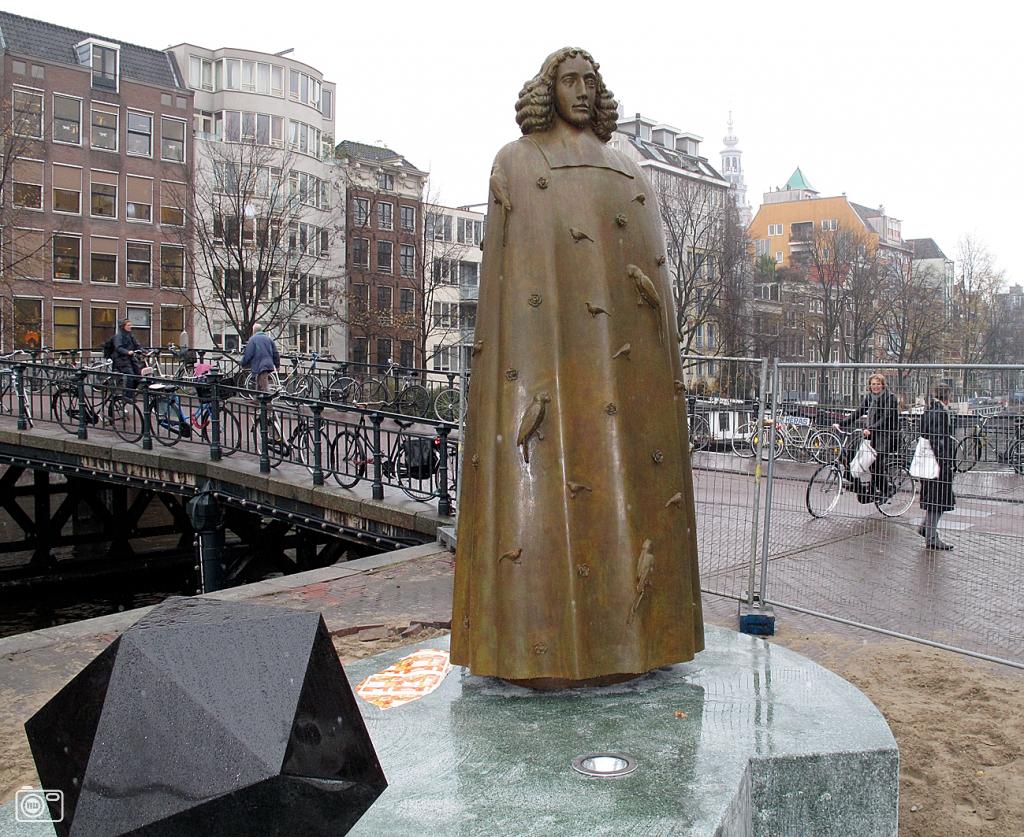
SPINOZASTATUE ZWANENBURGWAL
The statue by artist Nicolas Dings invites to sit on the spacious green-marble pedestal for a while. This has the form of an ellipse, which symbolizes infinity.
In addition to the statue on the robe with naturalistic symbols such as roses and birds-of-various kinds. The rose, which symbolizes love, combined with his name Espinoza (thorn). The thorn means: ' beware '. The birds of different feathers refer to people from many corners that were settled down in Amsterdam, such as the Portuguese-Jewish parents of Spinoza, and to the enrichment that the blending of their cultures with the Dutch Amsterdam brought.
In addition to the mathematical figure, the Icosahedron, a figure with 20 corners, a reference to the role of the mathematics and physics in his work. In the edge of the green marble, engraved ' the purpose of the State is freedom '. This refers to ' the goal of the State is peace or security "(Theological Political Treatise 5.2) together with ' the purpose of politics is in reality the freedom ' (TPT 20.6). Freedom has a broad meaning:
' ... that their minds and their bodies are safe and that they can develop their own forces and can use their minds free, and that they don't fight each other not by hatred, wrath or list nor mutually a hostile mind these bikes ' TPT 20.6.
SHORT LIVE-DESCRIPTION
AMSTERDAM
Spinoza, of Sephardic Jewish origin, maran of birth, was born in 1632 and came in the Nes as a merchant from his 17th year. That is from circa 1650. He meets than friends with who he maintains his life-long contact. After being expelled from the Sephardic Jewish community in its 24th year, he has had connections with friends and sympathisers outside the Jewish community. With his knowledge of Jewish philosophy, mathematics, the Bible and the Hebrew he gets an important input into the ongoing discourse in Amsterdam, although often in secret. In addition to the input of the Jewish education, a role plays that he quickly understands the work of Descartes, the founder of a new scholarly activities based on determinism, and even can form his own comment. A part of Descartes ' work is published in 1650 after his death. Spinoza comes quickly in contact with Descartes ' translator Glazemaker, which he probably advises and the Publisher of Descartes ' Jan Riewertsz, who also will edit part of Spinoza's work after his death. He opts for a life without wife and children and gambling on to become happy by the study of philosophy focused on (scientific) knowledge and achieving ' salvation ' from his way of virtuous life.
RIJNSBURG
On his 29th he moves to Rijnsburg (judging by the ' Correspondence ' he lives here already before August 1661). Here he sits nearer by a fuller, real university (Leiden) than Amsterdam University can offer him. Here he makes impression with his knowledge of and commentary on Descartes ' work, i.g. at the illustrious geometric company around mathematical Professor Frans Van Schooten. At the Rijnsburg cottage where he is residing stands a stanza of a poem of collegiant Dirck Camphuijsen (1586-1627).
Ah were all people wise
and wanted to do well
earth where a paradise
Now often is a hell
VOORBURG
After 3 years (spring 1663) he moves to Voorburg, where at least until september 1669 lives, resident in the house of a collegiant. Also the physicist Christiaan Huygens (belonging to Van Schootens society) lives here, with whom he maintains contact. He comes in Voorburg in conflict with the reformed pastors, what the reason is for a new book: the Theological Political Treatise (TPT). One of the reasons for the book is that he wants to show that he was no atheist. He did not succeed; the odium of atheisme, ' ongodisterij ', continues until long after his death (so far) around him. During the writing of the book change the political circumstances in the Netherlands change drastically. He may have wanted to play a role in the political situation which follows then and that might be the reason the book was edited without mention of his name in 1670.
The TPT contains ' Statements, showing that one can not only allow the freedom to philosophize with preservation of piety and of peace in the State, but also that they cannot lift her without peace in the State and even to lift her piety '. /From John, ho 4, v 13: ' we recognise that we Would remain in God and God in us, that he has given us of his spirit. "
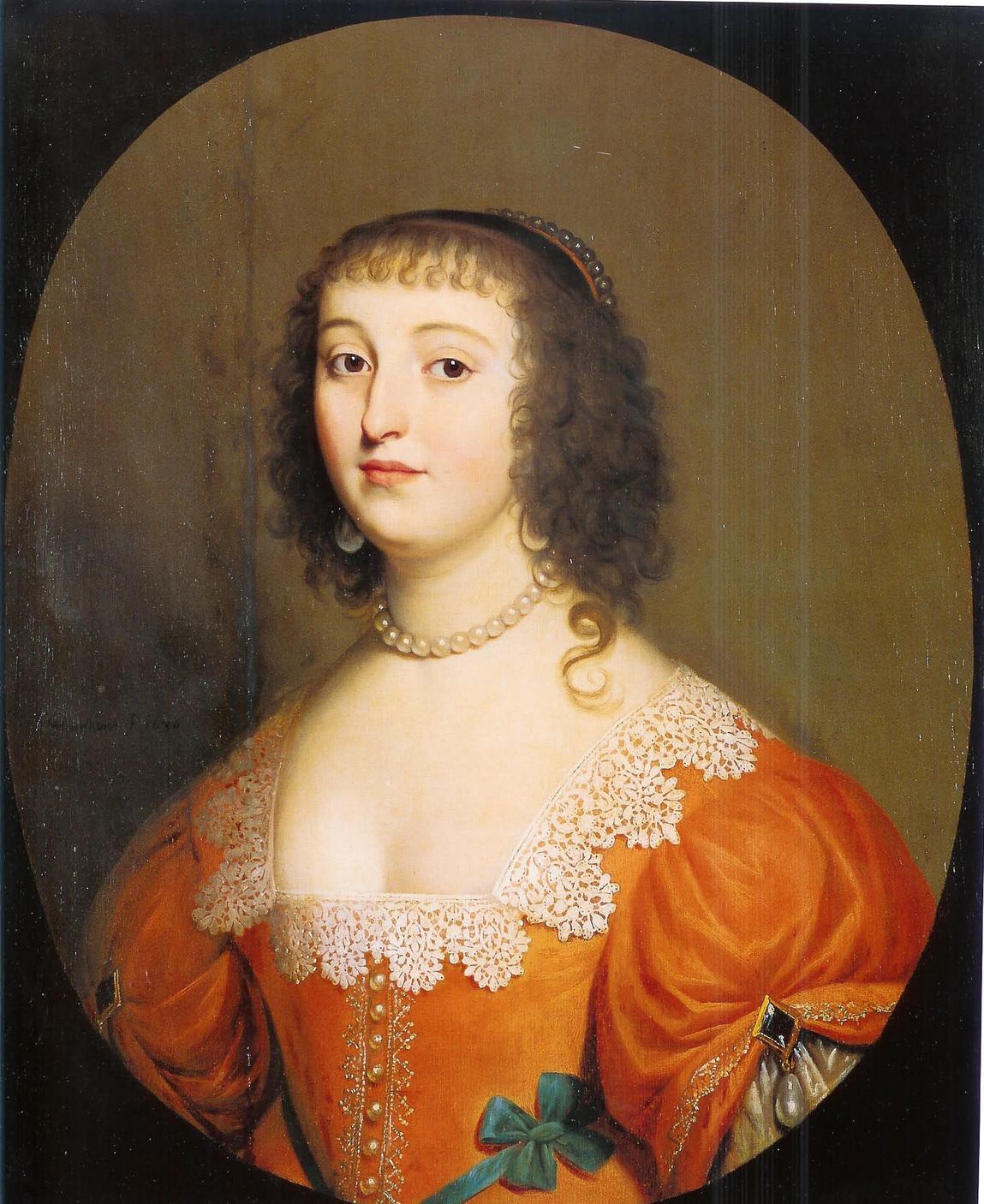 THE HAGUE
THE HAGUE
In 1669 he moves to the Veerkade in the Hague, where he comes into contact with international politics-progressive figures, for example the family Van der PALTS (see right ELISABETH VAN DER PALTS, 1618-1680) of the protestant union.
By her brother is Spinoza invited for a professorship in Heidelberg, what he skims over. In the Hague lives in that time also Spinoza's good friend Abraham Cuffeler (born 1637), in whose work many ideas of Spinoza appear in an easy understandable way (Klever, 1997, ho 8). 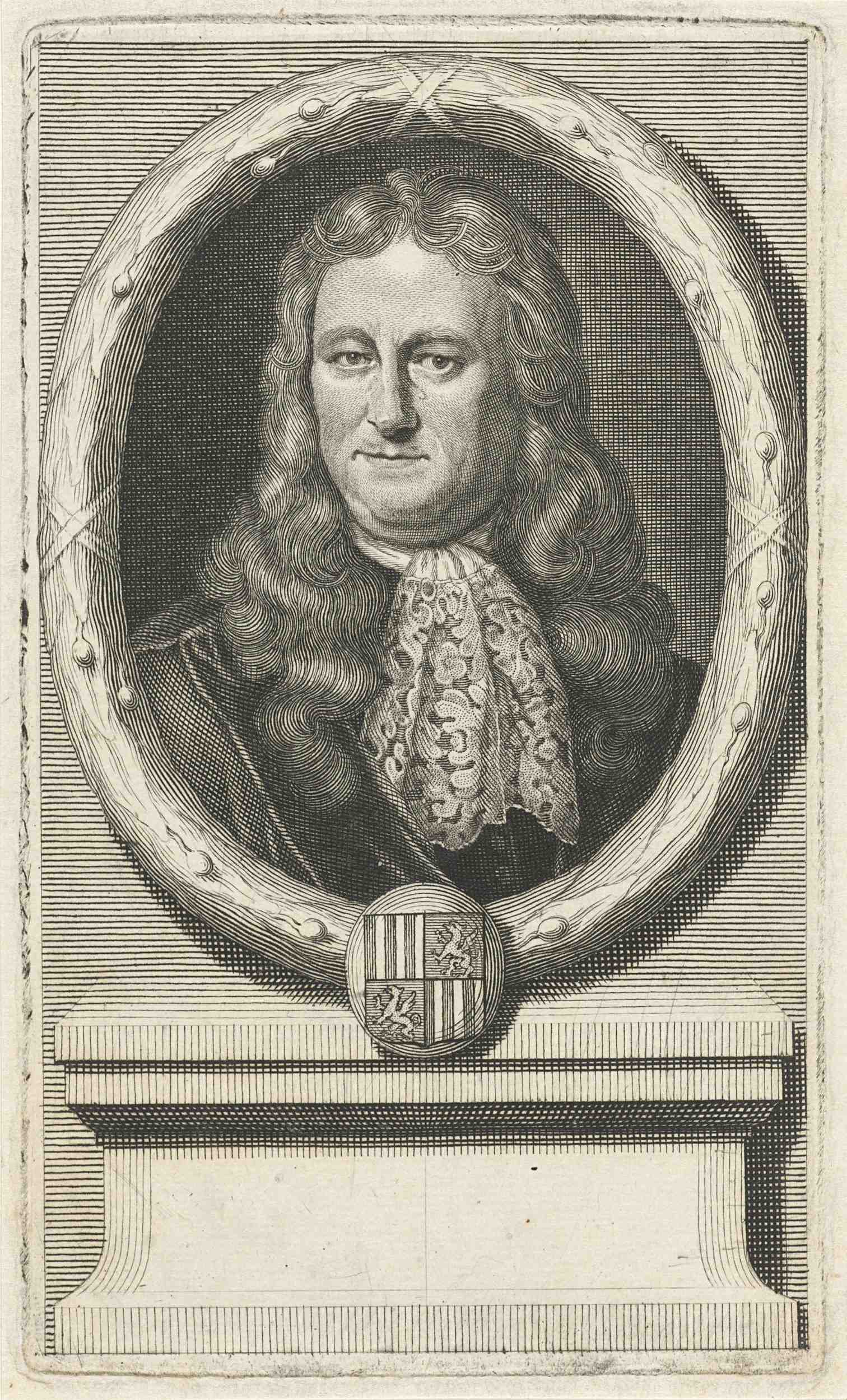
There are family ties with the inventor Cornelius Drebbel, of whom is known that he has affinity with the pansofy and he also writes a pansofic work himself, which is published at Riewertsz.
He has contact with philologists as Graevius and Isaac Vossius. As the famous rabbi Menassah ben Israel in 1657 dies, Spinoza with his knowledge of Hebrew, probably foolows him in of him translating and explaining Hebrew texts.
Spinoza may have yet a time believed in rebellion within France of the libertijnen, like Van den Ende. He visits in any case for unknown reasons (van den Enden?) in 1673 Utrecht to speak the libertine General Condé. In 1674 will his hope been bygone after the failed attempted coup and death of Van den Ende. In 1677 the Paviljoensgracht in the dwelling to Spinoza dies in the Hague. Apart from the publication of a textbook about Descartes under his own name and the TPT, his further work, including the Ethica, published after his death, without mention of author or Publisher by the Friends Group and publisher Jan Riewertsz.
PROFESSION AND LIVELIHOOD Spinoza comes from a wealthy merchant family, that also knew times of setback. Initially he is a merchant, but later he learns lenses grinding. This professionl, he will continue his life.
He has friends with whom he further develops his philosophy. Some of these often Baptist and sometimes rich friends offer to give him an allowance, what he ultimately accepts the required minimum. Spinoza's lifestyle reflects the 'ethics' of a financial enough. His simple and austere lifestyle is widely praised. For him is the most important thing that once his work is published. In the cost for that bears Birthday Jelles significantly. Jelles was a trader in figs and raisins but did in 1653 the case over to another and to dedicate himself fully to his rentenieren to study. The edition of the TPT is funded by Rieuwertsz.
15, 14. SPINOZA’s YOUTH (Zwanenburgwal 15 or Waterlooplein 207, then Houtgracht)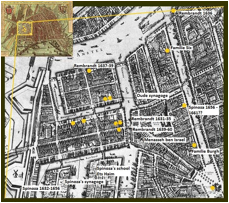
MAP OF SPINOZA'S BIRTH PLACE; BIRTHPLACE OF SPINOZA at the CURRENT STOPERA
If Spinoza was born at Zwanenburgwal 15, where now stands the image of Spinoza, or near the current synagogue on the houtgracht, is not entirely clear, but in any case somewhere on that square piece of ground, near the Stopera. An area where many Sephardic (Spanish-Portuguese) and asjkenasji (Eastern European) Jews lived.
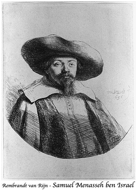 It is possible he was born next to the current Moses and Aäronkerk (where from 1640 a Franciscan community hosted). The Portuguese synagogue (Mr. Visser square 3) stood there in Spinoza's youth not yet. He has seen him after the opening in 1675 at a distance. The synagogue and schools that Spinoza visited, were on the Houtgracht Spinoza (now Waterloo Square). Spinoza has here a very good education with mathematics and music. He learned Hebrew and read the old testament.
It is possible he was born next to the current Moses and Aäronkerk (where from 1640 a Franciscan community hosted). The Portuguese synagogue (Mr. Visser square 3) stood there in Spinoza's youth not yet. He has seen him after the opening in 1675 at a distance. The synagogue and schools that Spinoza visited, were on the Houtgracht Spinoza (now Waterloo Square). Spinoza has here a very good education with mathematics and music. He learned Hebrew and read the old testament.
He was taught in Jewish philosophy by the rabbis Saul Levi Mortera (1590-1660) and MENASSE BEN ISRAEL (1604-1657) (right). This way he will have been familiar with the work of hit Maimonides (1135-1204), Gersonides (1288-1344), Abraham Ibn Esra (1092-1167) and Averroes (1126-1198). Menasse was one of his most liberal teachers. They lived in the same neighborhood. He was not only rabbi but also publisher of books (and stands for this reason in contact with the Hartlibians). He also has contact with collegiantenleidsman and hebraicus Adam Boreel, who lives in the Houtstraat. Boreel made in depth study of Judaism, with the ultimate goal the repent of Jews to the (Protestant) faith. In this he collaborated with Menasseh ben Israel and Judah Leon Templo. An important project was the translation of the Mishnah. On the Singel 425 is MENASSE BEN ISRAEL (right on an etching by Rembrandt) honored with a memorial stone on the wall.
During his early years Spinoza had been confronted with the humiliating rejection of Uriel da Costa (1585-1640) from the Jewish community. Spinoza's own ideas spurred like Uriel also not always with what he heard at school. This eventually led to his expulsion in 1656 from the possible Sephardic Jewish community, probably under pressure from the mainly Calvinist consistory, a depletion of the idea that there is no afterlife would be unacceptable found (statement of s. Nadler). What exactly caused the ban is not to say with certainty. There is still another explanation, in which a financial should be the motive plays. Spinoza himself has done no effort to undo the ban, something had was common.
4. NES: meeting with friends, COLLEGIANTS and FRANCISCUS VAN DEN ENDEN (Nes 59-65, Frascati) as merchant visited Spinoza the adjacent Fair regularly and he will surely near light-alcoholic beer have drunk, because the water was less appropriate to drink than beer. Spinoza is in any case actually signaled at café visit in the Nes witness a police report.
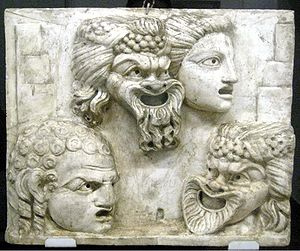
Probably Spinoza himself lived here too in this neighborhood in the period after his banishment from the Jewish synagogue in 1656. He met probably merchants, such as the Baptist Jarigr Jelles (1620-1683) and Pieter Balling, what became friends for life. Refugees from different countries often lived in these deep premises, which had been a century earlier monasteries with a tradition of receiving refugees. Below was also the FLEMISH FRANCISCUS VAN DEN ENDEN (1602-1674) with HIS ART-and BOOK SHOP (left) and a small printing company.
Spinoza will definitely have run by the shop, where was spoken about the contents of the books and so have come in contact with Van den Enden. The Flemish culture already had rather than the Dutch had a rich Renaissance development, which Franciscus van den Enden.
In Antwerp Franciscus had through his brother Martinus come in contact with the Flemish art world, including Rubens and Van Eyk (Rubens dedicates an engraving to Franciscus van den Enden). Probably Franciscus van den Enden starts a Dutch branch of his brothers trading on. In his house lived a pupil of Rembrandt, whio had a beautiful collection of prints of Lucas van Leyden.
With Jan Knol home in the Nes were collegiants-meetings. At such meetings was talked about religious doctrines and dogmas, as of the Fall and the existence of the afterlife. Or about the existence of witches. Here all denominations could speak. On some collegiants-meetings in the neighborhood (known is the Rokin), where Jan Knol or the Flemish Mennonite and socinian Galenus Abrahamsz de Haan (1622-1706) spoke, came a audience of 400 people.
A well-known collegiant with many international contacts was Adam Boreel (Middelburg, 1603-Amsterdam, 1665), a Dutch theologian and Hebrew scholar, perhaps also alchemist. Boreel was one of the founders of the College of Amsterdam collegiants. He was in contact with Oldenburg, Petrus Serrarius (this wrote about him with Boyle). They expected from him that he was a defender against atheism and the undermining of the piety under the influence of the ideas of Descartes. And with John Dury, Jan Amos Comenius and the 'Hartlibian ', the correspondents around Hartlib. He was also good friends with Menasse ben Israel. Riewertsz will in 1671 publish the work of Cornelis Moorman, a supporter and confidant.
7, 24, 23, 26. MENNONITE COMMUNITY 't LAM (Singel 452), de ZON (Herengracht 109-111; Singel 118), WATERLANDERS, BIJ DE TOREN (Singel 159) and Old MENNONITE CENTRE WATERLANDERS (Oude Nieuwstraat/Teerketelsteeg)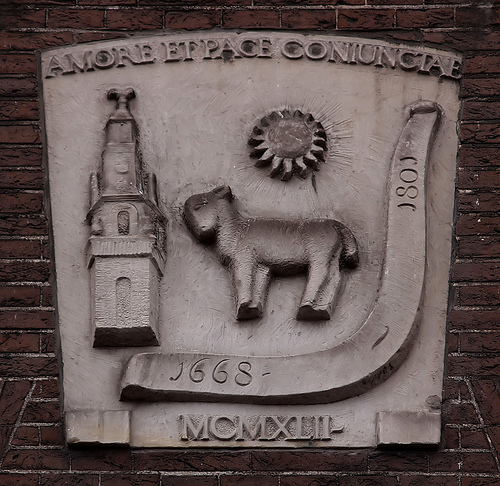 GABLE STONE tLAM
GABLE STONE tLAM
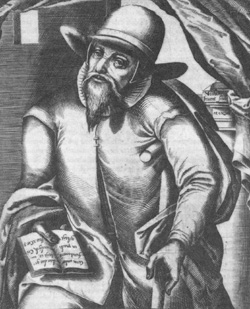
Many friends of Spinoza have a Mennonite or Mennonite background. Also his publisher Rieuwertsz and translator Jan Hendrik Glazemaker (1619-1682).
After the anabaptism in Munster on violent manner had tried to achieve their ideals, MENNO SIMONS (1496-1561) with (right) this flow in pacifist direction developed.
Core point of the Mennonite faith was the rebirth of the individual by God's grace, making these in his or her divine nature was restored. The born again person – the new creature-had the free will to resist sin and recovered using the ' Holy Spirit ' to complete and to become one with Christ. It is striking how much views (also in terms of ' morality ' money, see links) in the manual of the Baptist Christian ethics (Inleidinghe) directly from that era seem to refer to work of the always remained Catholic Dirck Volckertszoon Coornhert (Frijhoff; Spies).
There exists at the Anabaptists kinship with the Arminian, remonstrant movement. And with the choice of van Oldenbarneveldt for peace at the 12-year-old file. Usually life the Mennonites relatively sober in the spirit of Coornherts ' Comedy of the Rijckman '. That among the Anabaptists many influential and wealthy merchants were, showed the exhibition ' 450 years Mennonites in Netherlands '. The Anabaptists wore circa 1672 by a significant loan to the fight against the French. A ruling of Riewertsz about Jelles, both from Mennonite circle, shows their respective ideas. Jelles emerges as a ' mercator sapiens ', a merchant, who with his wealth wants to contribute to knowledge and science.
RIEWERTSZ ABOUT JELLES: … … but seeing that the tendency to accumulate money and goods could make him happy in the soul, he has his company, when that very well ran and a lot of money, to a fair Manager left and loosened himself of it. Without ever getting married, he has looked up to the outside melee to the world's silence to concentrate on knowledge of the truth, which leads to God's salvation, and thus to obtain the wisdom ...
Jarig Jelles grew up on the Damrak, near the current Victoria hotel. His father had a stone facade on the House with the imagination of ' Hope '. This is part of ' faith, hope (' The hope remains our geduurig require ') and love '. He has a House on Herengracht 109. Spinoza's friend Simon Joosten de Vries (died 1667) lived on the Singel 112 ' The Vriesche Boer (Farmer) ' .
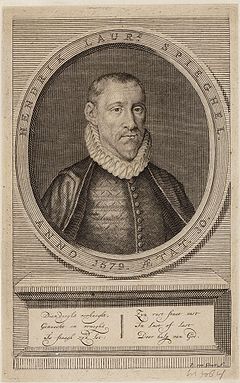
11, 16, 19, 21, 23, 34 , 28. SCHOUWBURG (Keizersgracht 384) and his history; NIL's CAFé STIL MALTA (Singel 167); REMBRANDT (Rozengracht 184; Bloemgracht); BIJ DE TOREN (Waterlanders, Singel 159); Lodewijk Meijer lived in his youth in the Dolle Begijnsteeg, corner Oude Zijds Voorburgwal 92 (naast 'De Bulldog'); Vondel lived in his youth Warmoesstraat 39, later Spuistraat 188.
About "The history of the theatre" is written by J.A. Worp. Members of the rhetoric chambers gradually went to the direction of the Singel, such as H.L. SPIEGHEL (right) and the Keizersgracht (P.C. Hooft). Aan de Keizersgracht settled previously (1618) the first Nederduytsche Academy (which the father-in-law of Glazemaker belonged, the mathematician Cardinael. The man through whom Glazemaker became the translator of Descartes ' work), who had quickly to withdraw in order of the 'Vroedschap'. More about this branch of d'Egelantier with motto ' Zeal ' on the left page (under ' politics and rhetoricsj ' and ' Stage performances on the street ').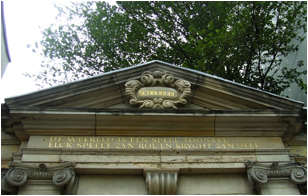
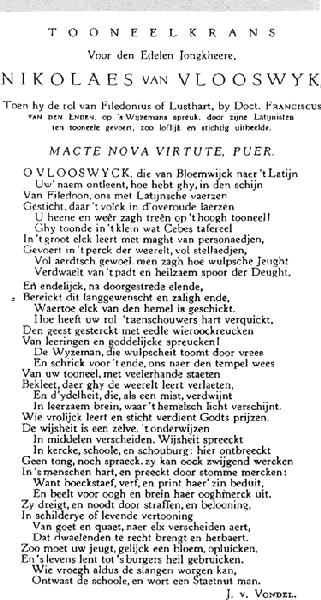
ENTRANCE THEATRE
The performances in the Nes moved to the theatre on the Keizersgracht, 1637 by van Jacob van Campen was built. A statue in the square behind the gate honors Coster, Vondel and Hooft as founders of the Dutch stage. Above the entrance Vondels's words: ' De weereld is a children's Theatre, Elck plays his role and gets his part '.
The theatre had a function in showingf the ' roles ', in which one could recognize themselves. Through the scene the audience could be called upon to an ' inspired and wise ' life. Could also through on-the-classics-based performances indirect criticism be expressed on political figures.
Classical plays of the Roman Terentius (-195 to-159) by Franciscus van den Enden as teaching materials were used. Passages in Spinoza's Ethica came out, probably because Spinoza also appeared in such a piece (as a slave in Eunuchus). In 1657 a play by Franciscus of the Enden themselves, Philedonius, ' Lust heart ', was performed; a piece about controlling lust by reason. Joost van Vondel wrote ' TOONEELKRANS ' for the protagonist (right)
LOUIS MEIJER and NIL The Schouwburg of van Campen is rebuilt In 1665. The rebuilt Theatre has other possibilities. There can be used more technique and stunts are performed. This is a new orientation of the Baroque theatre to performances in: on ' rational-classical ' bedrock Theatre according to the ideas of NIL. The from home Lutheran Louis Meyer (1629-1681) is from 1665-1669 have been Director of the theatre, but get the occasional disagreement with Spanish repertoire ' and the leidingover ' NIL in 1669.
Classic plays of the Roman Terentius (-195 to-159) by Franciscus van den Enden were used as teaching materials , namely Meijer follows a second line namely that of the first Nederduytsche Academy to make Sciences accessible to everyone by making the scientific terms to translated from the Latin in the Dutch, inspired by the ideal of his purist half-brother Kók, who has become a known-lexicon writer. Standardization and definition plays an important role. The idea is that it saves time, when people need to learn to not Latin still take knowledge of scientific results.
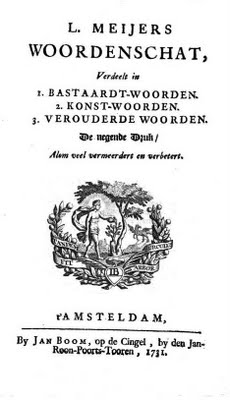
The company NIL played several works of P.C. Hooft again. There was also a ' modern ' implementation of Gijsbrecht van Amstel of Vondel: all prayers and long-winded passages were deleted from it. The Gijsbrecht was a tribute to Hugo de Groot, who lived in France in 1638 as balling.
Meijer has written two works, from which his approach suggests: 1. a lexicon with a classification of words in: bastard words and art words and 2. ' In the tooneelpoëzie Naauwkeurig onderwys ' (published in 1765). This last is an attempt to stage laws; entirely on ' rationalist ' basis. It also gives a description of the affections derived from Spinoza. Somewhat ' mathematically ' intent with many definitions and precise distinctions. He aims to draw up a play theory according to a scientific approach.
With the lexicon he makes the work of his brother. A first version of the lexicon is published by Boom, a next part by Rieuwertsz.
Johannes Bouwmeester, best friend of Louis Meijer and member of NIL, confidant of Franciscus Van den Ende, brings in 1672 at the Hayy ibn Riewertsz translation of Tufayl's ' Yagzan ', possibly at the instigation of the circle around De Geer and the Hartlib circle around of the Royal Society.
Pococke, belonging to the De Geer-circle was already in the thirties working on the work. It emphasizes that people even without geometric knowledge can get ' true knowledge "can get from experience. The book ' The life of Hayy ibn Yagzan ' gives in a simple way partly Spinoza's thinking, including the geometric method in very understandable language. This fits well in the pursuit of accessibility of knowledge for everyone, also one of Meijers ideals. It has a slant based on empiricism, which is also in Spinoza's work is to be found. It seems to be an example of someone, who became wise, without scientific knowledge. Spinoza answered builders question ' how te get wise? ' with a reference to the emirische method of Bacon combined with a steadfast character.
Not everyone can like Rembrandt, Vondel and everyone in the vicinity of Spinoza can fully support rhe new the new Descartes-rate. So Serrarius has criticism. However, the theatre pieces in the spirit of NIL from 1679 (the theatre has to close the doors by of the Vroedschap during the war years 1672 to 1678 ) stepped up and pulled a small century long good audience. They are pieces that on simple way put an ' uplifting ' morality without reference to God on the shelves. Probably here is a historical connection to the influential 't Nut van het Algemeen', whose Baptist founder Jan Nieuwenhuijsen (1724-1806) had in 1787 the Headquarters in the 'Sun'/Singel.
13. THE LATIN SCHOOL OF VAN DEN ENDEN, STAGE. Science, politics (Singel presumably 267)
In 1652 is Latin SCHOOL of Franciscus Van den Enden (1602-1674) bankrupt and he is forced to log on to the ' Boedelskamer ' in the Desolate City Hall, where bankruptcies are handled. He moved with his family to the Singel, where he founds a Latin school. The most likely is that he and his first wife Clara Maria and children coming from Poland on the Singel 267. He would then have come to live in a building of the Haarlem poets family of Elslant. Boëthius of Elslant is mentioned by Maria Tesselschade Roemer.
Several future poets follow classes at this school: Elslandt, Joannes Antonides van der Goes, Jan van (1647-1684), Pieter Rixtel and Nicolaes van Vlooswijk.
Spinoza will learn Latin in this school and also give lessons himself. Probably he also lived in the House of Franciscus van den Enden on the Singel in consideration that he gave lessons. On the Latin school learned Spinoza not only Latin. Here was also a lot of talk about theatre, science and politics. The school performed (classicist) pieces in Latin in the theatre.
TONEEL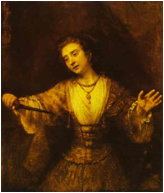
Classic plays were used by van den Enden as teaching materials. Emotions (see rule of LUCRETIA, painted by Rembrandt), which play such an important role (Ethica III) in Spinoza's work is , are well bid.
SCIENTISTS
Van den Enden is a versatile person, who among other things made detailed study of the newer philosophy, such as Frances of Bacon, Descartes and Hobbes (' Rather ... ', pg 32). Some of the students at the Latin school turn out to be future scientists. Van den Enden and especially Spinoza gradually comes in contact with the scientific world. Spinoza in particular also by his knowledge of Hebrew and innovative ideas of the work of Descartes. How Spinoza exactly came into contact with Descartes ' work is not known, but it is obvious that booktraders like Van den Enden and Rieuwertsz played a role and have been for Spinoza on interlocutors.
Van den Enden, Spinoza, Burchard de Volder, (1643-1709), (from 1670 Professor of experimental physics in Leiden), Johannes Hudde, who lives on the other side, Louis Meijer, Johannes Bouwmeester meet regularly in ' delicious 'meetings, according to P. Baert in a letter to Christiaan Huygens (Klever 1997, p 206). The Danish anatomist Olaus Borch (1626-1690) writes about Amsterdam that this had become a meeting point for radical and atheist Cartesians. And mentions that the City Government had forbidden van den Enden public action. In 1662, it was Van den Enden forbidden to discuss in public, because "his conversation showed characteristics of atheism '.
VAN DEN ENDEN and POLITICS
He fulfilled in addition international diplomatic functions. He would have had a share in the realization of the peace of Münster (1648). He also wrote proposals for egalitarian settlers-communities. There were settlers who settled in the new, often quite empty, areas that were captured in other parts of the world. He was actively involved in the foundation of a ' new ' community in Delaware by P.C. Plockhoy (Zierikzee, 1625-Delaware, 1670), see also j. Lindeboom ' Stepchildren of Christianity '. Who was friends with Galenus Adriaansz de Haen, like him, came from Zeeland. This stood for separation of Church and State, a 6-hour working day and democracy and was in contact with Samuel Hartlib. The latter was also in contact with the circle of Louis de Geer to the Keizersgracht 123. The methodologist of the later Royal Society, Francis Bacon, is already turning to find similar ideas about ' new land'kolonieën ', such as New Foundland.
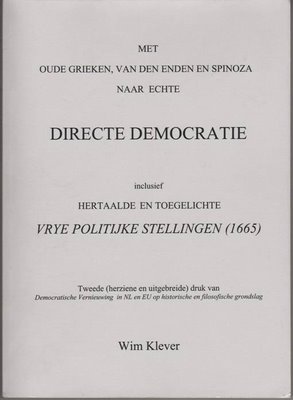
In his ' Short of New Nederlants Verhael Gelegenheit ' (1662) van den Enden gives his views on the political concept of ' equality'. The State should bring benefit to everyone in equal measure. The wellfare-highering effect of the State must occur independently of one's talents, sex, property, and social status. He opposes expressly that equality would mean assimilation.
The laws should focus on the public good while they give space for individuality to everyone in an equal way .
In his (left) ' VRYE POLITIEKE STELLINGEN' (1665), van den Enden ' 'pioneer of democratic thought', speaks for freedom of speech and for the common law to develop. Further, he works out the idea of folk-sovereignty. He is convinced that the people through experiencing the practice of democracy in public meetings and consultations will win insight.
As an example of how democracy can work he calls the State of affairs in Holland during the eighty years ' war against Spain. But he also warns that all officials with a watchful eye should be followed, especially those who Excel in eloquence and greed. In the PostScript he speaks his anger on Hollands laxity in this time of war, which he on the Regents says that it ' the only congestion are of the Dutch people brave zeal '. Van den Enden speaks explicitly about the blockade by the English fleet and on the recent intake of New Netherlands by the English.
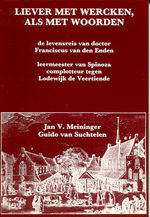
Van den Enden is considered (Wim Klever) as a forerunner of the French Revolution, where the concepts of freedom, equality and fraternity to measure were of a new society.
Francis will be hung in 1674 the Enden on the Place de la Bastille because a planned coup together with rebellious nobles against French SUN-king Louis XIV was untimely discovered. It seems likely that this coup he has been prepared in advance for a number of years. Van den Enden lives than a few years in Paris as personal physician of Louis XIV. It is not known how long he already was busy with the preparations. The question is the extent to which Spinoza has been aware of this (see "TPT"). In any case, son-in-law Kerckring (1683-1693), who like van den Enden was active internationally and diplomatically, seems also to have been involved (alleging ' RATHER WERCKEN.... ', right). The hasty mariage between Theodor Kerckring and Maria Clara Van den Enden just before Van den Enden's departure to France, seems to have had a political goal (also). There is a possible relationship with the visit of Cosimo III. In any case will Theodor have later still contact with the Grand Duke and Niels Stensen and the Grand Duke financially supports Maria Clara, after contact with Theodoor is finished.
47, 35. LOUIS AND LAURENS DE GEER (Keizersgraht 123), SERRARIUS and the Rozekruizers (Bloemstraat 16; Bloemgracht 19), Oldenburg, LOCKE; 47, 48, 49; COMENIUS
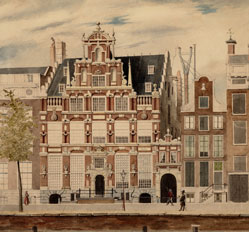 The family de Geer is one of the richest in the Republic. Thanks to the lighter, more easily transportable artillery that the Dutchman of Walloon descent De Geer produced, Sweden became an important military power . He brought the Walloon blast to Sweden and pulled from 1620 to 1640 thousands of Walloon and Lorrain workmen.
The family de Geer is one of the richest in the Republic. Thanks to the lighter, more easily transportable artillery that the Dutchman of Walloon descent De Geer produced, Sweden became an important military power . He brought the Walloon blast to Sweden and pulled from 1620 to 1640 thousands of Walloon and Lorrain workmen.
The House was a hospitable meeting point of freethinkers who found a safe haven in Amsterdam. Both father Louis (1587-1652) as son Laurens de Geer (1622-1666) supported study and publication of dissident writers and philosophers (such as René Descartes, Jan Amos Comenius and John Dury), also of writers from previous centuries, including
Rosicrucarians and freemasons, and realized in their home a versatile library..
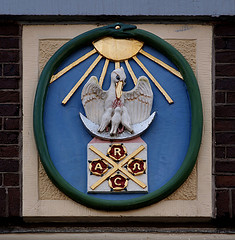
Works now for a part are found in the Ritman collection in the Bibliotheca Philosophica Hermetica, for which the Christian-hermetic gnosis forms the central unifying element (right EMBLEM BPH).
The word "Hermetica ' refers to the Egyptian man of wisdom Hermes Trismegistus. Among oyher things he develops alchemy. On the one hand, there is a chemist side: focused on chemical transformation processes. On the other hand, a psychic side: focused on the possibility of human transformation and achieve greater human happiness.
The search for the ' stone of the wise men ', the world soul, will eventually lead to the designation of ' oxygen ' as the stone. Also searching for the making of gold and the interest in Kabbalah have to be seen in this light. Physical-scientific findings, which have been confirmed by modern science as ' true ' insights like those of Boyle and Newton, tribe also from this tradition of the search for universal knowledge.
Downstairs one finds in the main showcase the Opera Posthuma by Spinoza; on the first floor including the ' Wercken (complete works) ' of Dirck Volckertszoon Coornhert. Several works are printed in Amsterdam. Publishers include Johannes Janssonius and Christopher Cunradus.
Comenius is in contact with Petrus Serrarius (1600-1669), Dutch theologian, millenarian, merchant and collegiant. He is of Scottish descent and has studied in Oxford. This is considered the ' Dean ' of the dissidenters in Amsterdam. He has contact with Adam Boreel (1603-1667), John Dury (1596-1680) and Menasseh ben Israel (1604-1657) (Richard Popkin: Spinoza and the sciences, 1986). Also with quakers, and William Ames (English protestant, who interfered in the controverse between Calvinists and Arminians; 1576-1633). 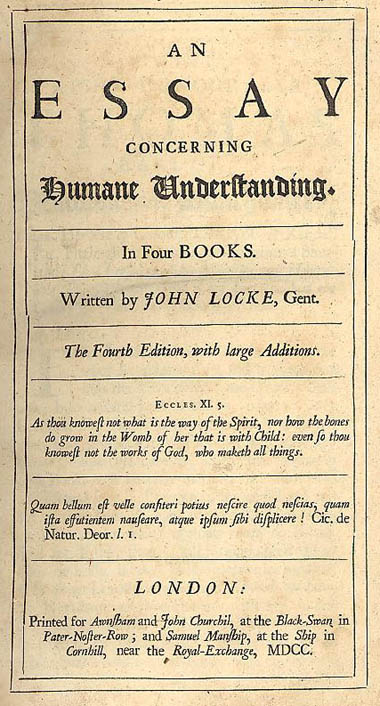 According to Popkin, there exists a close association with Spinoza, whose protector and contact with the outside world he would be.
According to Popkin, there exists a close association with Spinoza, whose protector and contact with the outside world he would be.
In these circles lives a high future expectation, widely shared. Serrarius comes several times with a different year for the arrival of the new Messiah (1656, 1665). This also has international-political sides: Menasse ben Israel tries to move England to admit Jews. Spinoza also seems certain to 1658 to be interested in these ideas together with two Jewish friends Juan del Prado and Daniel Ribera. Spinoza's contact with Oldenburg (brother-in-law of John Dury) is here probably arise. The originating from Bremen Oldenburg (1618-1677), Secretary of the English Royal Society, maintains contacts with European
scientists and has contact with Robert Boyle (1627-1691) and Thomas Hobbes (1588-1679). 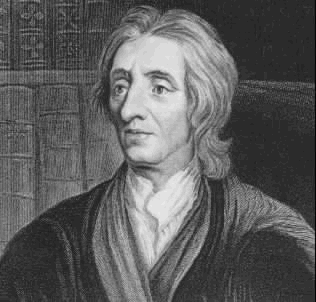 He corresponds also with Spinoza. Robert Boyle finances Edition of books in English in London (of Grotius ' De veritate religionis christianae ') according to Klever he discusses the letters in small circle, including Boyle and John Locke (1632-1704). Klever is convinced that especially the later as Lighting philosopher known Locke enthusiastic about Spinoza's work. He shows that LOCKE (right) many borrowed to Spinoza in his ' ESSAY concerning HUMAN understanding (left) about a.o. morality. Herein he discusses the three types of knowledge, which in Spinoza and Van den Enden (' drieerley kennisse ') so important.
He corresponds also with Spinoza. Robert Boyle finances Edition of books in English in London (of Grotius ' De veritate religionis christianae ') according to Klever he discusses the letters in small circle, including Boyle and John Locke (1632-1704). Klever is convinced that especially the later as Lighting philosopher known Locke enthusiastic about Spinoza's work. He shows that LOCKE (right) many borrowed to Spinoza in his ' ESSAY concerning HUMAN understanding (left) about a.o. morality. Herein he discusses the three types of knowledge, which in Spinoza and Van den Enden (' drieerley kennisse ') so important.
LOCKE also wrote two treatises on ' GOVERNMENT ', STATE ADMINISTRATION (left column, right) like Spinoza and ties in with his idea from the TPT, that ' the reason peace recommends. " Here Locke goes back to the naturephilosophical work of Hugo Grotius: the State must do everything to defend itself, which is a law of Nature. This idea is also found in Spinoza. Locke lived an underground life for some time in Amsterdam (1683-1689), where he adopted a pseudonym that Hugo de Groot also had used. He had struggled to find a Publisher in Amsterdam. Leading spirit of the Royal Society, especially in terms of scientific method (empristisch, trial and error), was Francis Bacon (1561-1626). Starting in 1665 Christiaan Huygens goes to Paris to help to start a French 'Royal Society'.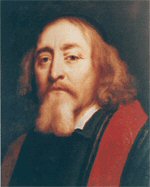
At the end of his life, from 1656-1670 lived Comenius (1592-1670) in Amsterdam, he lives a while on the Keizersgracht 123, the ' House with the heads ' of his protector, the rich metal and arms dealer Laurens de Geer (1622-1666). He stood at the head of a small Tsjech printing and publishing company. From 1662 he was also a member of the printers guild. He provides education to mayors Pieter de Graeff (1638-1707) and Nicolaas Witsen (1641-1717).
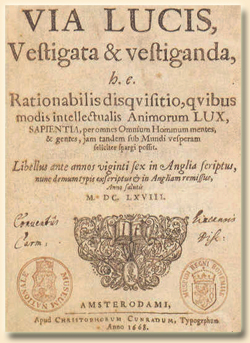
Comenius opposes abuses of the new capitalism, rejected the exploitation of the colonies and sought support in mysticism. Selfishness in man can be, according to him, the best combat through education. In his ' Great education learning; the full art all people to learn everything ' he suggested that everyone must go to school, because everyone has the same instance to learn. Also women and arms belonged to get an education.
The idea of al-improvement repeatedly reverts back (Clamores Aliae, 1665-1670). He even offers a far-reaching hand in reconciliation to the Pope and the Jesuits and does not hesitate to criticize dogmatists in own ranks. After his experience with monarchies he speaks his sympathies for a Republican establishment. He devotes a part of his ' General discussion ' to the future establishment of the peace-loving world, where he is the creation of a World Federation of peoples and States and the foundation of three universal institutions that a safe and harmonious development of mankind must guarantee: an international Peacecourt, a oecomenic religious constitoire and an international seminar for the dissemination of knowledge and scientific insights.
In 1668 appears VIA LUCIS (all written in 1641) at CHRISTOPHER CUNRADUS (right). It is already written in 1641 when Comenius stayed in London, where his main goal is the establishment of the College of the light, the first Academy of Sciences that would gather scientific insights and technical innovations to the light of knowledge at the service of humanity to spread all over the world. As he reflects on where the ' college of light ', that the beginning of the rebirth of the human society ' must usher, he has first time especially on the London Eye. Later a Moravian town, Prague and Amsterdam. His pansofic desire finds much resonance at a number of European Protestant scholars. He has a lifelong friendship with Samuel Hartlib and John Dury (born in Elbing)
.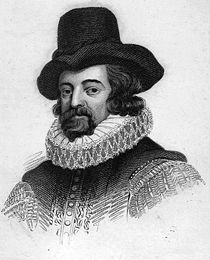
De influential group of English scholars around Hartlib saw a drop in the work of Comenius of the ideas of FRANCIS BACON (left). The English reformers established much hope of Comenius ' project of the ' al-improvement of mankind '. There were attempts for a perpetuum mobile. It had to be the accuracy of the pansofische thought about the harmony of the universe confirm and also provide a new source of energy humanity. In 1670 speaks Comenius came out in favour of a Republic. To the Hartlibians also heard the arabist Edward Pococke (1604-1691); he occupied himself with the translation of ' Life of Hayy ibn Yaqzan' of Ibn Tufayl. Later, this sequel is done by his son Edward (1648-1727) and in Dutch translated by Johannes Bouwmeester and published at Riewertsz.
5, 1, 25, 40, 41 44. DESCARTES (Descartes: 5. Kalverstraat, 25 met opschrift: Westermarkt 6) AND OTHER SCIENTISTS (CLASSICIST HOUSE of HUDDE (architect Vingboom, Singel 284); (Locke, 41. Damstraat, 40. Westermarkt)
Under the influence of Descartes, the sciences go in a new direction. At the University there is a battle between cartesians and others. Descartes is based on empirical observation that everything is subject to laws of cause and effect and is the father of modern science.Although in Descartes ' system there is actually no place for ' above'natural, he stcks himself tot the traditional image of God. He also remains himself Catholic.
Actually the on perception-based method is not suitable to study the human mind (still the possibilities are limited). By this he takes no distance from the negative image that man has about himself by the dogma of the Fall and the thereto belonging disciplining by punishments in the hereafter. God and Nature than in Spinoza's works fall really together. This allows mankind to accept themselves and to get more views pointed out how to 'perfect' themselves together with the surrounding world.
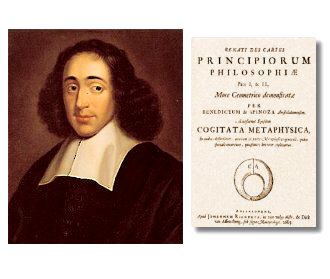
Spinoza puts the scholastic topic "human happiness " central and is also able to apply the new methods. For the cartesians, he is a partner, who speaks their language.
SPINOZA ' AMSTERDAMMER ' about DESCARTES ' PRINCIPLES of PHILOSOPHY/METAPHYSICAL THOUGHTS (1663)
Differences between Spinoza and Descartes are
1. as regards the method: Descartes doubts everything we know if that is true knowledge is (only that we think and therefore exist, we should assume). Spinoza thinks we have of much ' about '-true knowledge and that this intuitive knowledge can also be used. It is good to use this with the appropriate method and (logical) thinking and this way to transform as much as possible to true knowledge. Knowledge develops gradually (asymptotic). Since we necessarily also erroneous representations of affairs, also constitutes the removal of erroneous representations part of acquiring true knowledge (in the line of Bacon).
2. Spinoza's conclusion about the humans is that they should try to moderate certain passions and associated emotions , but not necessarily suppress, what is according to Descartes and in line with performances from different religions. Indeed, emotions belong to our Nature and ' natural law '. Through knowledge, we can increase our ' emotion management ' and therefore get ' more appropriate ' and happier lifes; we can make 'our lives more ' perfect .
3. There is also a difference in understanding the laws of motion, this is Spinoza assuming that everything moves amid a moving world. This exerts pressure on all sides, which also constantly at loss of pressure movement can arise. While Descartes movement is caused by transfer of only one movement impulse (see Klever on Cuffeler).
Although Descartes puts not long before Spinoza an immense leap forward, which was not yet processed, Spinoza already puts the next step by using the logic. At the request of the 19-year-old student in the Carthesian philosophy in Leiden Caesarius, Spinoza writes in Rijnsburg a summary of Descartes ' method, where he immediately makes some reservations (Metaphysical thoughts, COGITATA METAPHYSICA, see the cover top right; in it Spinoza suggests that a God that doesn't do miracles, might be more perfect than a God who needs miracles). In 1663 asks the Amsterdam Ethica-circle (see below) Spinoza to do this. It is conducted and provided with a preface by Louis Meyer and Spinoza's own name published by Jan Riewertsz.
OTHER SCHOLARS (Leiden: GEOMETRIC COMPANY AROUND FRANS VAN SCHOOTEN, Voorburg, including England) in addition to Leiden graduate doctors as Louis Meyer and Johannes Bouwmeester, who belonged to the close circle of his confidants in Amsterdam. Spinoza was in contact with known mathematician and physicists and physiologists, as Boyle, the Secretary of the Royal Society, Oldenburg and the Danish physiologist Niels Stensen (1638-1686). Also with the mathematician and philosopher Leibniz (1646-1716).
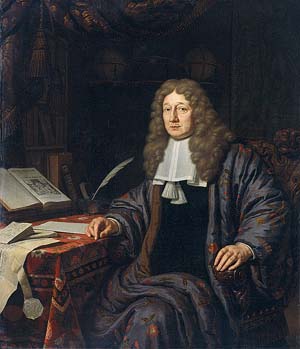 There are letters from 1666 of Spinoza known to the mathematician and physicist Johannes HUDDE (1628-1704) (left), who had been part of the ' geometric ' group of gifted students of the Leiden Professor Frans van Schooten Jr (1615/16-1660) who published himself in 1660 on Descartes. Possiblly Van den Enden has been the neighbour of the other side of the Singel Hudde. To the company Johan de Witt and Christiaan Huygens belonged too. In the Voorburg time, there was contact between Spinoza and mathematic and physica talent Christiaan Huygens (1629-1695). Between their respective work consists a striking resemblance in way of reasoning and formulate about the cosmos . Both had much contact with members of the Royal Society. In 1665 Christiaan Huygens to Paris goes to a French ' Royal Society ' to help to develop this. In Voorburg is Spinoza practically neighbor of Christiaan Huygens who comes to the family's outside house Hofwijck .
There are letters from 1666 of Spinoza known to the mathematician and physicist Johannes HUDDE (1628-1704) (left), who had been part of the ' geometric ' group of gifted students of the Leiden Professor Frans van Schooten Jr (1615/16-1660) who published himself in 1660 on Descartes. Possiblly Van den Enden has been the neighbour of the other side of the Singel Hudde. To the company Johan de Witt and Christiaan Huygens belonged too. In the Voorburg time, there was contact between Spinoza and mathematic and physica talent Christiaan Huygens (1629-1695). Between their respective work consists a striking resemblance in way of reasoning and formulate about the cosmos . Both had much contact with members of the Royal Society. In 1665 Christiaan Huygens to Paris goes to a French ' Royal Society ' to help to develop this. In Voorburg is Spinoza practically neighbor of Christiaan Huygens who comes to the family's outside house Hofwijck .
Spinoza's strength lies mainly in the fields of mathematics and logic, not on extensive own empirical research. He may have his theorem that all beings are formed on the basis of the ' conatus ' (commitment to self-preservation) derived from what he saw through his lenses. Physiologist Stensen tells that Spinoza was interested in his brain research: ...In that time (1661-1662) he came (Spinoza) during several days every day with me watching my anatomy of brain, which I ran on various types of animals, to discover the place where the movements occur and where the sensory sensations end. ... 'Although he tried like Descartes to obtain physicist and anatomical knowledge as much as possible , Descartes ' physiological and Huygens ' physicist knowledge seem to be more modern than that of Spinoza. His possibilities of access to academic knowledge was also significantly less. Christiaan Huygens, who in 1690 as first stated light as golf phenomenon, had his light-theory only after Spinoza's death around.
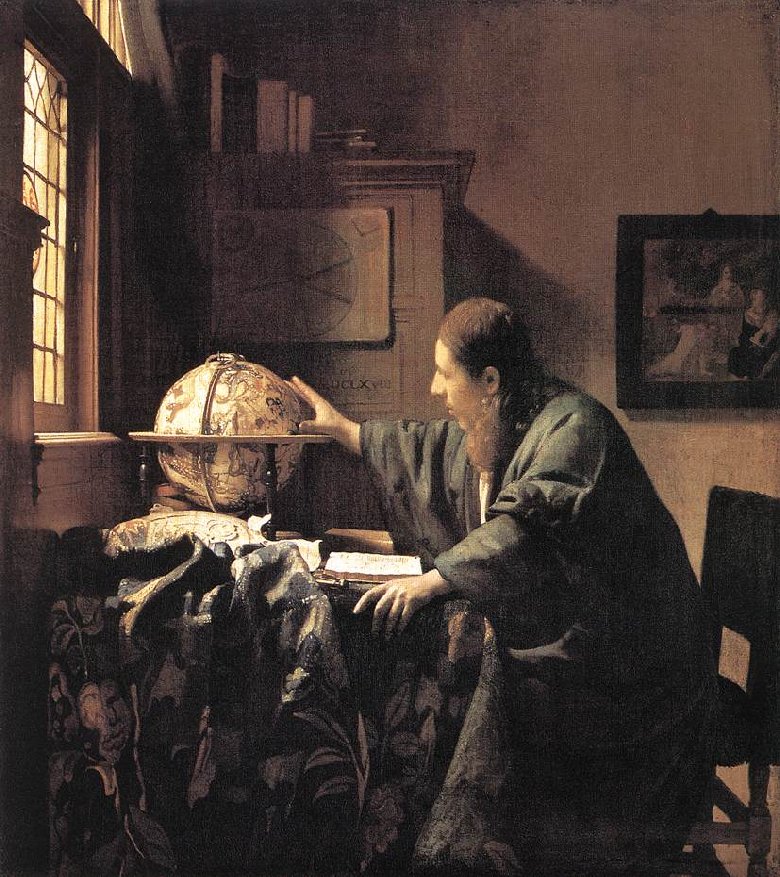
To for example Rembrandt's painting the night watch ' and ' Vermeers ' ASTRONOMER ' (left) shows how much the light in this time plays a role. Also in painting. Probably there was a treatise on the Rainbow by Spinoza.
Several Dutch scientists from the circle of Van Schooten were important political functions. Hudde lateron became a part of the vroedschap of Amsterdam and was later appointed many times as one of the mayors. Gillis Valckenier was his cousin. Johan de Witt became Grand Pensionary. Christiaan Huygens Cosmotheoros ', in which he his brother Constantine lints on a journey through the universe, speaks himself also out about power and war; It appears in 1698 (Icke). Both his father and brother Constantine played an important role in politics and the arts. Spinoza sends Christian its national work, TPT, to his pleasure.
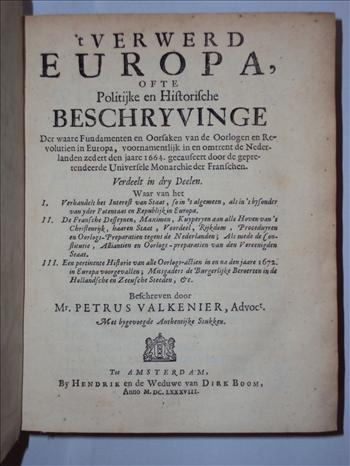
GEOMETRIC STATE ENGINEERING
This reasoning applied to European States can also be found in (right) ' 't VERWERD EUROPA ofte, Politijke en historische beschryvinge der waare fundamenten en oorsaken van de oorlogen en revolutien in Europa, voornamentlijk in en omtrent de Nederlanden zedert den jaare 1664, gecauseert door de gepretendeerde universele monarchie der Franschen ' (1675; published by endrik en de Weduwe van Dirk Boom, Amsterdam) of Petrus Valckenier, in which he accurately shows the factors balance of the various States with the purpose to indicate expected conduct of wars.
The concepts are akin to those of Spinoza and the la Court. The rationale is closer to that of Spinoza because he takes moral factors, human values, as forces. An important factor in the Netherlands is that the Dutch after the rebellion got attached to value his freedoms: freedom of conscience, freedom of thought. He thinks that (some) people find these more important than their own lives. In line with the natural philosophy of Hugo Grotius he finds that a State must do everything to defend itself (this is a natural law), but that an increasing influence with the consent of the other party must happen, for example, that a Covenant is made. He argues simultaneously for one privileged Church (this is in accordance with the situation as it existed in the Republic). This may have to do with the fact that he believes that the moral force in time of war can be more powerful than of fragmented churches. The exact content of a belief is actually less important, since it still revolves around core values of that society. Behind the scenes of the big politics Valckenier has much influence as Advisorfor William III and other politicians.
3, 20, 22. ADRIAAN KOERBAGH (convicted in 3. STADHUIS, DAM, see Van Moerkerken; 20. Rasphuis, Heilige weg; later Willige Huis, Schippersgracht; 22. coffin Oude Nieuwstraat 8; 3. buried Nieuwe Kerk)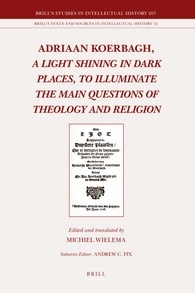
Adriaan Koerbagh's (1632-1669) father was a well-to-do plateel bakker from Bergen op Zoom and his mother a Dutch midwife. Adriaan studied medicine and law in Leiden. His father died when he was 12. His guardian was when Lambert Reynst (Amsterdam, 1613-Amsterdam, 1679), Amsterdam schout and burgomaster. Reynst is of the 'State-minded party' ('staatsgezinden') and family of Johan de Witt. In 1672, he is put of from the vroedschap. The law education was broad and practically oriented; the students had to mainly focus on Roman law and combined with Hugh the Great ' Inleidinghe to the Hollandsche rechtsgeleerdheid ' (1631) they had to the Dutch law.
Koerbagh wanted to encourage scholars to speak their native language, so he writes in 't Nieuw Words-book of Laws'. His book was also intended for those who use Latin words to do if they are very scholarly. 'Like indian birds, whem the mimic the words of humans'. His later ' Bloemhof ' appears under name of the printer.
He was through the study befriended Meyer, Bouwmeester and also with the translator of Leviathan Abraham Van Berckel. Except doctor, he was also a jurist. He wrote the book on Spinoza's work closely related to religion in philosophical speech lines (see right). Previously he had written. This is called a ' hurtful ' dictionary. Van Moerkerken: ' it seems a "General dictionary of Bastard words ', but in reality it is an alphabetically-ordered combat of any dogmatic religion and in particular the Christian '. Koerbagh wrote in the line of Louis Meijer ' New dictionary of Laws ' (1664). Here he takes the lexicographic work of Meijer as a base and add there own comments and ideas about the law. It is known that Adriaan Koerbagh had books of Dirck Volckertszoon Coornhert and Comenius is his bookcase.
As a jurist he mocks the Corpius Juris, which he called a very large book which also many clean jokes and unnecessary laws. ' In a half as thick book one could write in our own language, more clear and in a shorter way more and more necessary laws than there are i in the entire Roman code. But so are we, free people according to his own saying, and yet binding us as fools bind to task and laws of another people. It seems to let know, or one so that God had given to the pagan peoples more wisdom and sense than us '.
At ' Loy, law ' stands: ' The legal scholars know yet just like Plato, who once said: "when people have a lot of laws there are also many contentions or evil use". From the crowd of contentions and dissensions legal scholars have advantage. Justinus, a Roman historian, recounts of the Scyths that they lived more wisely than the Greeks with little laws with all their laws and learnedness. The Romans had also very many laws, even more than the Greeks. Yet they have lived in murder, robbery, on purpose and all kinds of excess. So it seems that, where many laws, many breaches have place; where few laws are, few infringements '.
The tragic sequel is pretty well-known (partly because the report by Hans Bontekoe in Van Moerkerken in Bontekoe), although around the exact circumstances much is unclear. The Utrecht printer van Eede of 'The Light ... ' ceased the printing halfway because of the content and went along to the authorities. The consistory had already addressed the Amsterdam magistrate at work, initially thinking that the work came of brother and future Pastor Johannes Koerbagh and there had already decided to action. The Consistory had put heavy pressure. For them also played another role that Koerbagh lived unmarried with a woman with whom he had a child.
Adriaan Koerbagh seems to have held outside shot during the process his study friend Johannes Bouwmeestert. Also about Spinoza says Adriaan Koerbagh that he has visited him only once, but that however, he had his knowledge of Hebrew not from him.
The outcome was that Adriaan in July 1668 was sentenced to 10 years in prison, an extremely heavy penalty, then later exile. John was quickly released. Adriaan Koerbagh began the criminal to sit out the penalty in the Rasphuis on the Heilige weg (20) and died in October 1669 died in the 'Willige huis ' to the Schippersgracht, where to he was transferred. The consistory, had requested an investigation into how it went with him in the Rasphuis. The reporting of Reverend Vinckius left, however, more than a year. Koerbagh died a week after his reporting.
His younger brother John (1634-1672), theologian, also convicted in the same time to a comparatively light punishment. He continues to preach in its own way. From the protocols of the consistory, shows that he is speaker on a well-visited meeting at the Rokin and has ' defamatory spoken about our Saviour Jesus Christ and against ' syn eternal godtheyt and voldoeninghe ... ''. John and also sister Lucia die several years after Adriaan in 1672. They are buried in the new Church.
It is still a question why it is went like it went. Did the brothers really went too far? Of Koerbaght is known that he just like the sacrementarians denied the real presence of Christ in the sacrement of the evening meals. With a ban of the States on the socinianism probably also this doctrinewas prohibited . Was it the younger brother who was threatening to the Church? Was it the political situation, in which the Calvinists and the army had to play a larger role again? Was it newer insight after the appearance of the Leviathan in the Dutch? Played a role that people outside Amsterdam were involved, including Van Berckel? Or was it actually directed against the Republican Mayor and guardian of the brothers Lambert Reynst? Even Hudde supports the penalty and also this belongs under the responsibility of his cousin Gillis Valckenier. 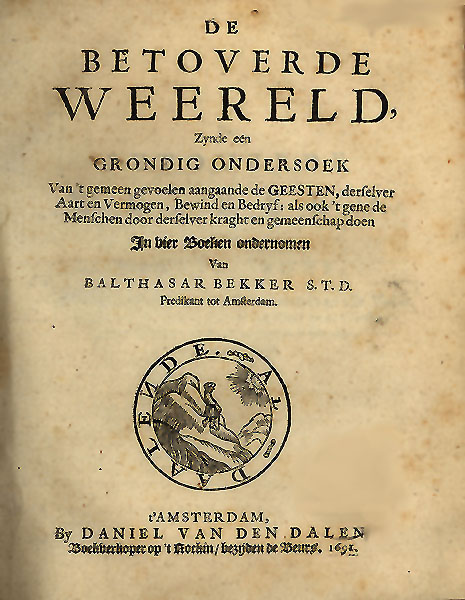 Nevertheless will these two as mayors appointed Rieuwertsz a few years later in 1675, who edits comparable books as city printer and give him protection this way. Had they expected that the soup not so hot would be eaten as hot as it was served and that they could have exiled Koerbagh after a short time ?
Nevertheless will these two as mayors appointed Rieuwertsz a few years later in 1675, who edits comparable books as city printer and give him protection this way. Had they expected that the soup not so hot would be eaten as hot as it was served and that they could have exiled Koerbagh after a short time ?
In 1691 appears ' The enchanted weerelt ' BEKKER (1634-1698) or Balthazar, a book about witches that like Koerbagh's is a controversial book. It was published by a printing company, which, like that of the young Rieuwertsz was located near the stock exchange building . Amsterdam and some cities did ban the book, but not the States of Holland. Bekker, who is pastor of the Church may not preach, but the salary paid to him by Amsterdam.
18. CAUTE! (Dirk VAN HASSELTSSTEEG 't Martelaersboek) 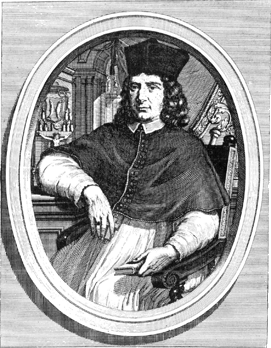
Innovative scientific ideas call resistance. On the point of religion especially among the common people. Spinoza seems to be aware of this and has some understanding for it. All thinking is limited by the limits of human comprehension. As scientists already can get only a limited insight, then that applies to a greater extent the population, whose comprehension is initially focused on everyday things to ' persevere ' in existence.
The scientific world knew the history of Giordano Bruno (1548-1600) and Galileo Galilei (1564-1642). Self knew Spinoza the history of exile-for-ideas from the Jewish community of Uriel da Costa (1585-1640) already earlier than his own exile. Publisher Riewertsz must have been informed about the decision of Descartes to pass most of his work after his death . At that time there were already rumors about the possible cause the deathof Descartes or the suspicions about the death of Pope Adrian. In any case, the group around Spinoza, who is involved in the publication of his work, respects the wish that most of his work is published only after his deathand not on his own name . Rieuwertsz was so careful not to mention his name as a the publisher and he gave the place of publication for example ' Hamburg ' instead of ' Amsterdam '. The TPT is prohibited by the Court of Holland in 1674. Riewertsz had already taken larger than usual precautions at the first edition : no author on the title page and for the publisher H. Künrath, Hamburg. Künrath was an existing person, was an alchemist and Rosicrucian, not living in Hamburg. In later editions he used other names. In a later edition, in which he spends in one band with the TPT Meijer's ' Philosophy, interpreter of Holy Scripture ', he uses the names of Heinsius and Sylvius.
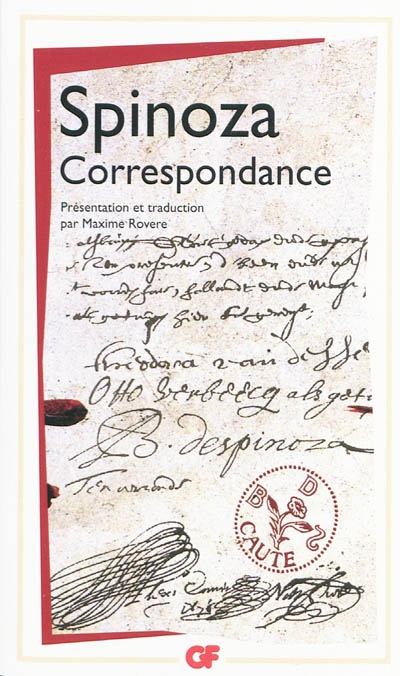
A benefit was that Spinoza had ambition not like Meijer to share the common people in his scientific ideas.His work was in the first place meant for the more educated part of the population. For scientists and also for theologians. Especially the latter formed a conduit of new ideas to the population. Therefore, he wrote in Latin, which work could not reach the ordinary people not directly and would give less offense feelings among ordinary people, who had not learned the scientific way of thinking.
When Spinoza corresponded, he reminded the reader to exercise caution by clicking his stamp "CAUTE" (left), ' beware to the letter.
When rumors reach Rome just after Spinoza's death that work of the "atheist" Spinoza is going to be published, Cardinal Barberini command to the Archbishop of Utrecht, Johannes van NEERCASSEL (1625-1685) (top right), to find this out. He will question Rieuwertsz. Recently has become known that a yet unpublished copy of the Ethica through another line, namely through Tschirnaus-Stensen, has come in the Vatican rightly. Then a ban by the Vatican follows.
17, 18. IN 'tMARTELAERSBOEK; JAN RIEUWERTSZ (VAN HASSELTSSTEEG northside near thej Nieuwe dijk, formerly nr 14); 18. Tymon HOUTHAAK (corner NIEUWE ZIJDS KOLK); Simon Joosten de Vries, Singel 112 (formerly 'De Vriesche Boer')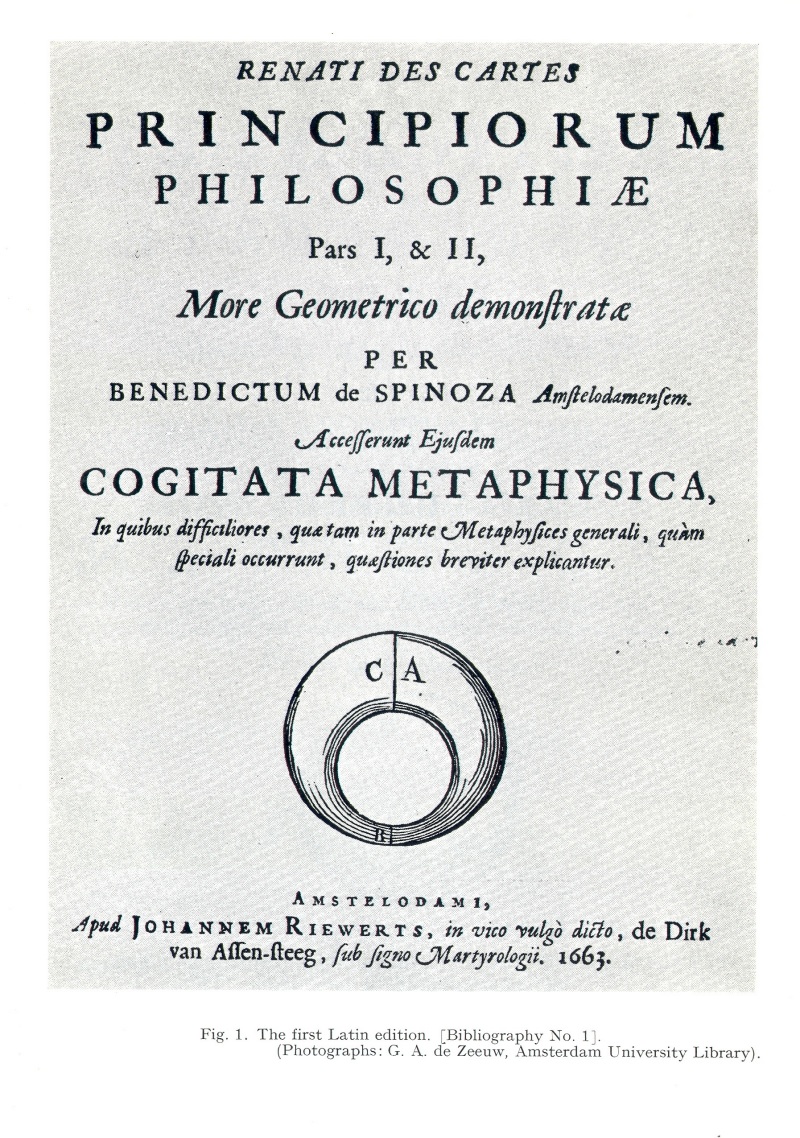
JAN RIEWERTSZ
Spinoza's work is published by Jan Rieuwertsz (the old, later the young). Rieuwertsz ' publishing and in 1649 open book shop In ' tMartelaersboek in the Dirk Van Hasseltssteeg (see for example links at the bottom of the title page: VAN ASSEN-STEEG ...Martyrologii).
IN 'tMARTELAERSBOEK
Inside one could freely speak about religious and Scientific Affairs. The title of the publishing house refers to books, that were intended to keep the memory alive of people who had witnessed against the established order their new insights, even if they were paid with death. Well-known Dutch martyr books are: ''De gheschiedenisse ende den doodt der vromer martelaren' van Adriaen Cornelisz. van Haemstede (1559); het doopsgezinde 'Offer des Heeren' (1562) en het 'Haarlems martelaarsboek' (1615). Before Rieuwertsz came here lived engraver and printer Claes Jansz Visscher (15587-1652) and had his company . He had made and published many engravings made of executions of Anabaptists. Also the famous engraving of the beheading of Johan van Oldenbarneveldt made by him.
In 1675 Rieuwertsz was appointed partly with help from Mayor (and scientist) Johannes Hudde (1628-1704) city printer. It seems that ' Rieuwertsz ' has understood well Spinoza's Caute. This is true for all men, who were directly involved in the edition of Spinoza's books. It is striking that none of these Gideonsbende's portraits are known. Perhaps out of caution. The men put themselves in the service of their mission to spend to do this type of work. There must have been a great mutual trust.
RIEWERTSZ and SPINOZA
Spinoza would have been in contact with Rieuwertsz because he corrected proofs to earn money. When Spinoza lived no longer in Amsterdam, he has stayed here (Nadler) and he used the address as an address every now and then.
ETHICA-GROUP
Several persons of Riewertsz publishers group (see below) were also in the small circle of Amsterdam's friends, who discussed the nearly completed portions of Ethica. Like: Simon Joosten de Vries, Dr. Louis Meyer (1629-1681), Johannes Bouwmeester (1630-1680). and Jarig Jelles (1620-1687), Pieter Balling. Presumably also the brothers Adriaan Koerbagh and theologian Johannes (1634-1672).
Some of them also wrote work, closely related to that of Spinoza, which is also from the titles suggests. Balling wrote a spiritualistisch work ' Light on the candlestick ' (1662). ' Light ' is with him 'reason', by which a man can know God, in which knowledge is our salvation and which we can know by looking inward. There we find the true guideline. Therefore nobody can dictate to another. This work was translated into English in 1663 also issued by the quaker William Ames (according to Akkerman Adam Boreel could alsobe yhe author). He also wrote about the inadequacy of words; Meyer had a dissertation written about ' movement and rest ': ' Matter and its states, motion and rest '. In letters to Spinoza him were questions submitted refering the first chapters of the Ethica, which was set up according to the mathematical method, whereby a think system is built on the basis of definitions.
THE EDITORGROUP
JAN RIEWERTSZ (1617-1685) (the Publisher, collegiant and Mennonite, who at his death donated to the Mennonite movement ' Waterlanders en Vlamingen', but did not belong to them, earlier edited work of Louis Meijer and translations of DESCARTES; further work of collegiantenleader, mennonist referend, socinian/unitarianist and alchemist Galenus Abrahamsz de Haan en Dirck Camphuysen, de Remonstrant poet from whom a poem stand on the house in Rijnsburg; in 1658 a translation of the Qur'an (in Arabic provided by ' Tymon Houthaack for Jan Riewertsz '). In 1671 work of collegiant Reverend Cornelis Moorman (1600-1660). In 1672 appears at Riewertsz IBN TUFAYL's 'Het leeven van Hayy ibn Yagzan (translation based upon Pocockes Latin translation from the Arab from 1671). In 1684 Riewertsz edits a work of Abraham Cuffeler (1637-1694) (transl. 'Proeve van natuurlijke en kunstmatige redeneerkunst, leidend tot de beginselen der alwijsheid'; publishers-pseudonym: 'Künrath, Hamburg') and in 1687 of derived from Görlitz Tsjirnaus (1657-1708) 'Geneeskunde van de ziel of een proeve van authentieke logica'. Both authors write in the line of Spinoza and knew his work (Klever).
JARIG JELLES (1620-1683) (probably the lender, ' mercator sapiens ', good friend of Spinoza, akin spirit, Mennonite, collegiant, member of Ethica-study group). He wrote in 1673 ' Belydenisse des Algemeenen En Christelyken Geloof' (published by Rieuwertsz), in which he argued that Christianity and the doctrine of Descartes can tolerate each other well. He used biblical terms to express his philosophical thoughts. He denies that the human nature in itself is corrupted. Attention of him for the natural sociability of human beings, about which Spinoza in his Ethics writes also. He wrote the foreword for the Opera Posthuma and was together with Louis Meyer one of the editors.
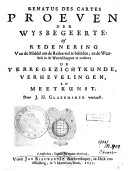 JAN HENDRIKSZ GLAZEMAKER (1619/1620-1682) (the translator of Latin to Dutch. Father of his wife Catelyntie, whom he married in 1651, was mathematician Sybrandt Hansz. Cardinael( 1578-1647). He was one of the two ' scientific ' Mennonites because of whom the ' First Nederduytsche Academy ' had to close. Through him, Glazemaker learned to know Descartes whom he translated. In the preface to his translation from 1659 of Descartes ' Proeve der Wysbegeerte: of Redenering van de middel om de Reden wel te beleiden, en de Waarheit in de Wetenschappen te zoeken; de verregezichtskunde, verheveling en meetkunst' Glazemaker thanks an unnamed "friend", who knes a lot of geometry and has helped him in translating . This will probably have been Spinoza , what then shows that they helped each other). This means that Spinoza already during the 1950s already intensively has deepened himself in the texts of Descartes ' . Also that the group had experience with the solution for this controversial work to pablish it only after the authors death.
JAN HENDRIKSZ GLAZEMAKER (1619/1620-1682) (the translator of Latin to Dutch. Father of his wife Catelyntie, whom he married in 1651, was mathematician Sybrandt Hansz. Cardinael( 1578-1647). He was one of the two ' scientific ' Mennonites because of whom the ' First Nederduytsche Academy ' had to close. Through him, Glazemaker learned to know Descartes whom he translated. In the preface to his translation from 1659 of Descartes ' Proeve der Wysbegeerte: of Redenering van de middel om de Reden wel te beleiden, en de Waarheit in de Wetenschappen te zoeken; de verregezichtskunde, verheveling en meetkunst' Glazemaker thanks an unnamed "friend", who knes a lot of geometry and has helped him in translating . This will probably have been Spinoza , what then shows that they helped each other). This means that Spinoza already during the 1950s already intensively has deepened himself in the texts of Descartes ' . Also that the group had experience with the solution for this controversial work to pablish it only after the authors death.
LODEWIJK MEIJER (1629-1681) (for the general editorial work, e.g. lexicographer, hard worker, was in Amsterdamse Spinoza's Ethica-group; see also under ' Schouwburg and NIL ' and ' the first Neederduytsche Academy '). In 1668 Riewertsz publishes anonymous ' Philosophia Scriptura Interpres '. In the foreword Meijer praises Descartes: "the author of this happiest and finest method was the noble and matchless Renatus Descartes '. In 1674 Riewertsz publishes it again, along with Spinoza's TPT (both anonymous). In this way Rieuwertsz directs expressly to cartesians also.
Louis Meyers work and ambition iareparticularly located in translating Latin words and scientific concepts in the Dutch, which makes it possible that the ordinary Dutchman could take knowledge of scientific thinking in his own language. Meijer is also Theatre-man, one of the directors of the theatre, which is ultimately a strong mathematical (geometric) and classicitic thinking and will write a Handbook for Theatre: the Naauwkeurig onderwijs in de toneel. To his grief he came little to writing plays.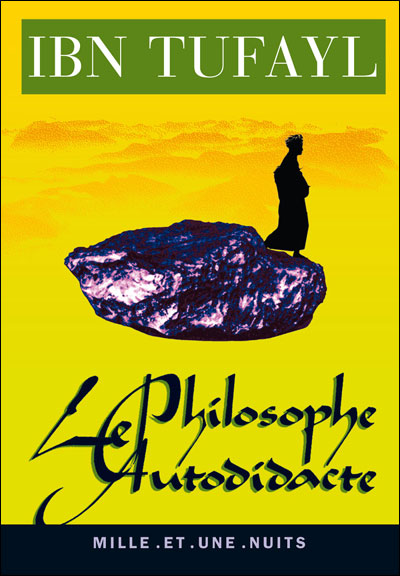 JOHANNES BOUWMEESTER (1630-1680), a very good friend of Louis Meijer and further from Spinoza, Franciscus van den Enden and Adriaan Koerbagh, did also editorial work. He was a good translator, who sometimes improved a translation of Glazemaker (Akkerman). Further translated Bouwmeester IBN TUFAYL's 'Het leeven van Hayy ibn Yagzan'.
JOHANNES BOUWMEESTER (1630-1680), a very good friend of Louis Meijer and further from Spinoza, Franciscus van den Enden and Adriaan Koerbagh, did also editorial work. He was a good translator, who sometimes improved a translation of Glazemaker (Akkerman). Further translated Bouwmeester IBN TUFAYL's 'Het leeven van Hayy ibn Yagzan'.
18. TYMON HOUTHAECK (1625-1664) is often referred to as the printer. He pressed also known under the name Johan Brakel. Except printer he was singer and actor. The address is corner Nieuwe Zijds Kolk (also called 'de Vogel Struis'). His father (1597-1658) had also already had a printing office, gave out pens and ink, printed plays for the theatre and was further supplier of beer.
PETRUS VAN GENT (kopiïst, doctor in medicine).
PROTECTION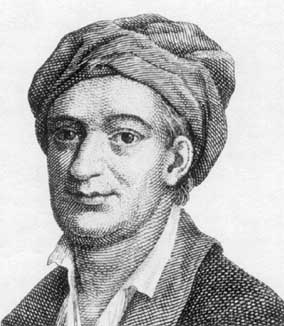 With the protection of these concerned Publishers group, that was well aware of the opposition that authors with new groundbreaking ideas get, Spinoza was probably able to complete his work in their discretion and needed not 'to put water in the wine' (writing things different as he wanted), such as possibly Locke (according to Klever), who had to be careful alik with his editor Jean Leclerc. Jarig Jelles (foreword) and Louis Meijer (editor) took care of the edition of the ' Opera Posthuma '.
With the protection of these concerned Publishers group, that was well aware of the opposition that authors with new groundbreaking ideas get, Spinoza was probably able to complete his work in their discretion and needed not 'to put water in the wine' (writing things different as he wanted), such as possibly Locke (according to Klever), who had to be careful alik with his editor Jean Leclerc. Jarig Jelles (foreword) and Louis Meijer (editor) took care of the edition of the ' Opera Posthuma '.
Or confidence in Schuller was justified, is the question (he was much in debts). Schuller played work of Spinoza to Leibniz in the framework of a failed alchemical project together with Galenus Abrahamsz (period 1675-1680). LEIBNIZ (1646-1716) had much interest in and affinity with Spinoza's work and with the pansofic thinking.
That is not to say that the group and the other friends always agreed with each other and with Spinoza. With Spinoza there were in addition to a lot of agreementst, differences in opinion between him and Meijer (and thus possible to the Paris averroists) (zie Sutcliffe, Akkerman, and this website: Theatre/NIL and 'Rembrandt and NIL') and Koerbagh and Spinoza.
Certain contradictions of the many within the former Republic (eye/ear; war and peace; and with whom; State-or Prince inclined; God or nature; own thinking or general authority; government by the few or many; cartesian or not) did not pass by this group. Spinoza-himself shows to be not only an utopianist (improve the world by developing ' true ' and especially ' adequate ' knowledge) to be a realist (everything is the result of the operation of laws and therefore for now ' perfect ').
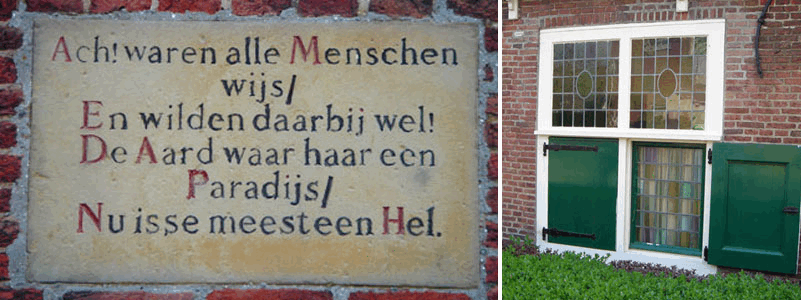
The PUBLISHERS FUND RIEWERTSZ
Riewertsz publishes in addition to Descartes and Spinoza much works of collegiants: CAMPUYZEN (see the legend of the Spinoza House, Rijnsburg, above) and Moorman. Overlooking the publications of Riewertsz they show a larger kinship with collegianten-foreman Adam Boreel and the Royal Society (take also the translation of Tufayl) than with Koerbagh and Van den Enden, who both were not in the fund of Riewertsz. Spinoza's thinking also seems more akin with those first-mentioned. That Riewertsz published Cffelers 'Specimen artis ratiocinandi naturalis & artificialis ad Pantosophia (!) manuducens; proeve van natuurlijke en kunstmatige redeneerkunst, leidend tot de beginselen der alwijsheid', strengthens this idea yet.
SPINOZA'S WORK WHICH WAS PUBLISHED DURING HIS LIFE

To DESCARTES ' PRINCIPLES of PHILOSOPHY/METAPHYSICAL thoughts (1663) is above allready a few times refered. There exists in certain (scientific) circles much interest in this work, partly because of the criticism on Descartes. Although there are many points in agreement with Descartes ' work, the ultimate conclusion to which it leads, namely that God does not exist (despite Descartes ' dualism and its own fidelity to the Catholic faith) and the cold mechanistic worldview, calls resistance. While Spinoza's work does not violate reality and leaves still space for the experiencing God. This fits well with the ideas of Constantijn Huygens, Adam Boreel, the Hartlibians and members of the Royal Society.
THEOLOGISCH POLITIEK TRACTAAT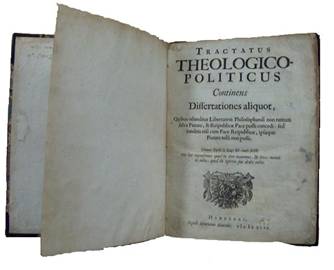
Spinoza begins to write the Theologic Political Treatise in 1665. An important sociological-theoretical work e.g.. because of the desirability of separation of Church, State and science, which Spinoza reasoned stands for. It appears at Riewertsz in 1670 and together with Lodewijks Meijers ' Philosophia scriptura Interpres ' in 1674. To Oldenburg he writes from Voorburg about the reason to start the work: ' the opinion that ordinary people about me cherishes, that does not stop accusing me of atheism; I feel forced to avert thought as much as possible '. He had come in a threatening situation when he was called by representatives of the reformed church in his residence Voorburg publicly ' a dangerous instrument of the Republic ' and he sees himself obliged to defend himself.
In the following years comes great attention to Hobbes ' Leviathan ' about the State, which English translation appears in 1668. Already before Pieter de la Court (1663) and Franciscus van den Enden wrote on the State (1665). There is talk of increasing threat of war from different sides. This might gradually have got also a place in the work. It fits in his thinking to want to dò something (with ' praxis'-targeted words; see about TPT and praxis the close-reading of Roothaan). In any case Spinoza let down his work on the Ethics for quite some time.
In the political and Theological Treatise is repeatedly referred to Alexander the Great in critical sense. Hj might indirectly refer to Louis XIV. In this way to refer indirectly to a current situation was quite usual in the theatre and in the visual arts. By taking examples from antiquity or from the Bible was commented on current circumstances which were not in particular named, but were easily recognized by the viewer. In TPT, 17.6 Spinoza discusses how Alexander the Great himself deified in order to pursue its own goals and to be able to govern as a tyrant. Spinoza argues in his entire work is precisely that people their own (common) interest and therefore has preference for a democracy and not a monarchy.
'Let the people see me as a half God, "murmurs Alexander, ' they will let go my interest before their own interest '.
First sheet, chapter format and prefacee give the ultimate intention. Despite the resistance that it called, it is possible that the book nevertheless has had a positive effect in the period in which it is written. The necessary financial contributions for the struggle for freedom against the French, came also from ' pacifistisch'-oriented circles with whom Spinoza and his publisher had much contact. Perhaps the influence on Petrus Valckeniers ' 't Verwerd Europe (1675) '. This work influenced William III and other influential politicians (see above).
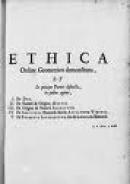
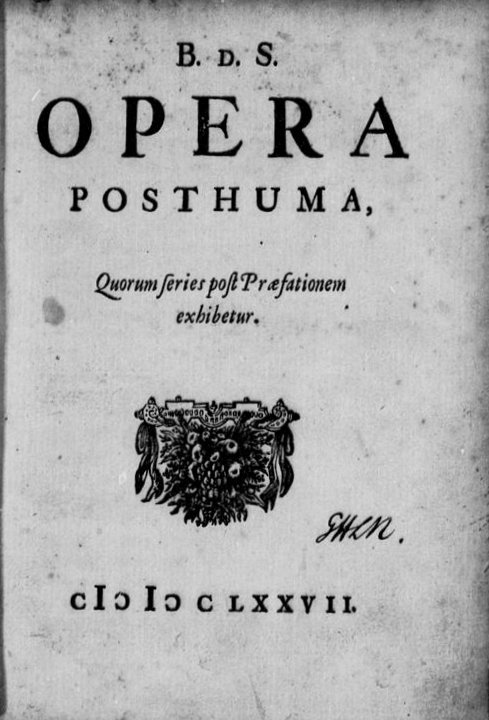 OPERA POSTHUMA
OPERA POSTHUMA
After his death in 1677 published in the Opera Posthuma (de 'Nagelate wercken'):
Ethica,
Emendatione
Cooerspondencen
Politiek Tractaat
Rieuwertsz publishes it out without mentioning the publisher name and the place of issuance ' Hamburg '. The Edition is provided by Jarig Jelles and Lodewijk Meijer. In de Opera Posthuma a portrait with subscript.
In the unfinished Political Treatise that Spinoza writes after 1672, he seems to have drawn the conclusion that democracy, for which he in the Theologicial Political Treatise had pleaded, still left waiting. Whatsoever, the one monarchy is not the other. In a monarchy, so he suggests, one should ensure as much as possible that the power of the monarch cannot expire to tyranny and ensure that it is adequately restricted. And a people's army, for example: rather than a mercenary army. Because in that case the power comes closer to the people-themselves. The Opera Posthuma are half a year after appearance banned by the States of Holland and Westfriesland.
INTERMEZZO
'Al wat geschapen is, streckt tot zyn behoudenisse. Tot behoudenisse van alle gheheel voordert de eendracht der deelen de gheheels. 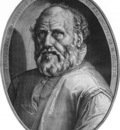 Dit gheheel is hier de menselycke nature, waar af elck mensch een deelken is. Als dan elck mensch doet zo hy ghaarne ghedaan ware, zo wordt niemand veronghelykt.’
Dit gheheel is hier de menselycke nature, waar af elck mensch een deelken is. Als dan elck mensch doet zo hy ghaarne ghedaan ware, zo wordt niemand veronghelykt.’
D.V. COORNHERT
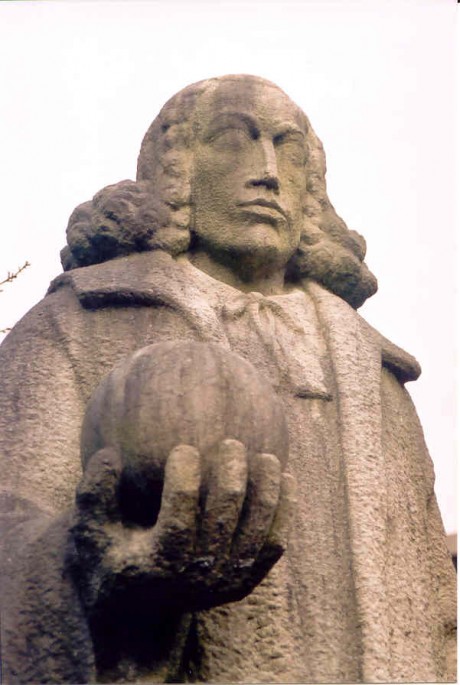 'Waaruit volgt, dat mensen, die door de Rede worden beheerst, d.w.z. mensen die onder leiding van de Rede hun belang nastreven, niet voor zichzelf begeren wat zij niet ook voor de overige mensen verlangen, en dus rechtvaardig, trouw en eerlijk zijn'
'Waaruit volgt, dat mensen, die door de Rede worden beheerst, d.w.z. mensen die onder leiding van de Rede hun belang nastreven, niet voor zichzelf begeren wat zij niet ook voor de overige mensen verlangen, en dus rechtvaardig, trouw en eerlijk zijn'
SPINOZA Ethica IV, 18 opm
'In het leven is het dus in de eerste plaats van belang het verstand of de Rede zoveel mogelijk te vervolmaken en in dit éne bestaat 's mensens hoogste geluk of zaligheid'
SPINOZA Ethica IV, aanhangsel IV.
SPINOZASTATUE (HILDO KROP)

